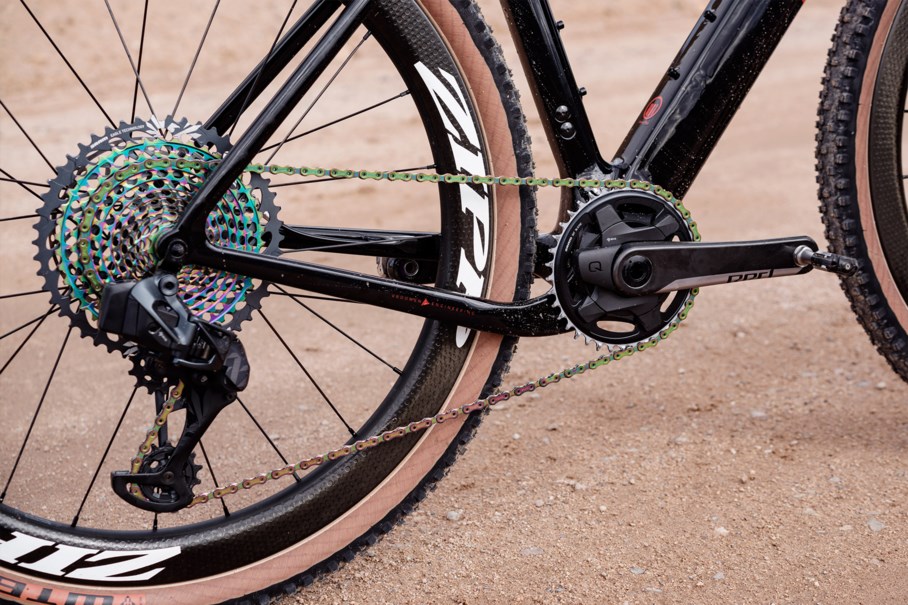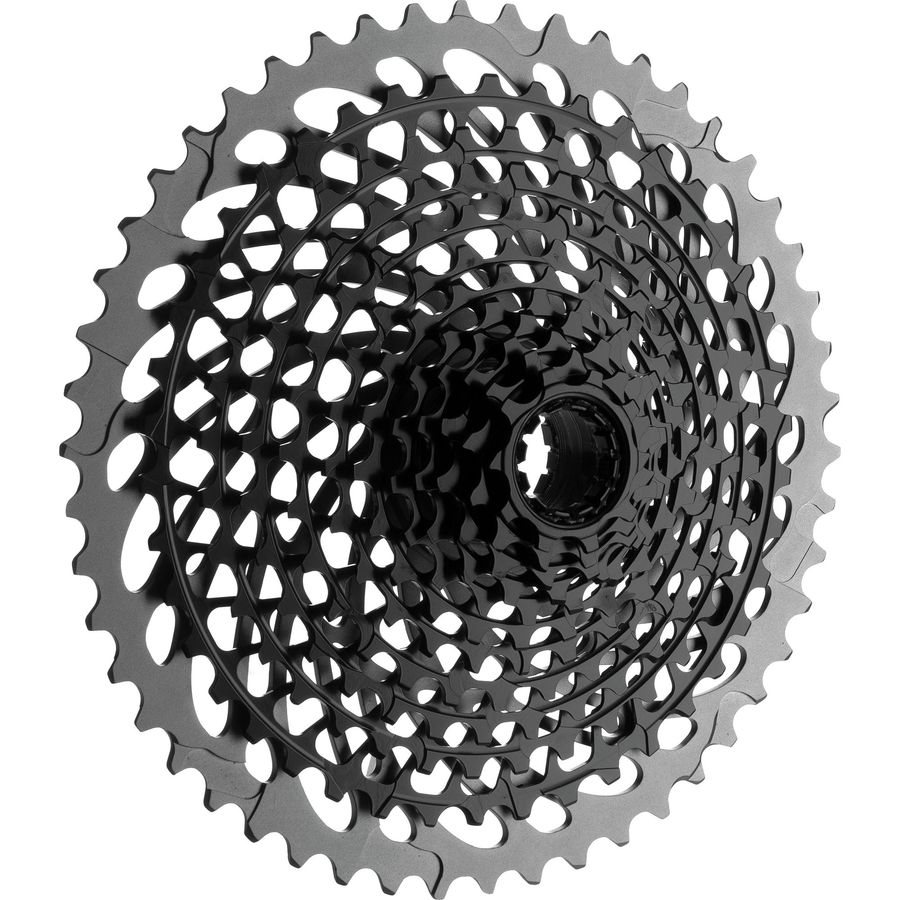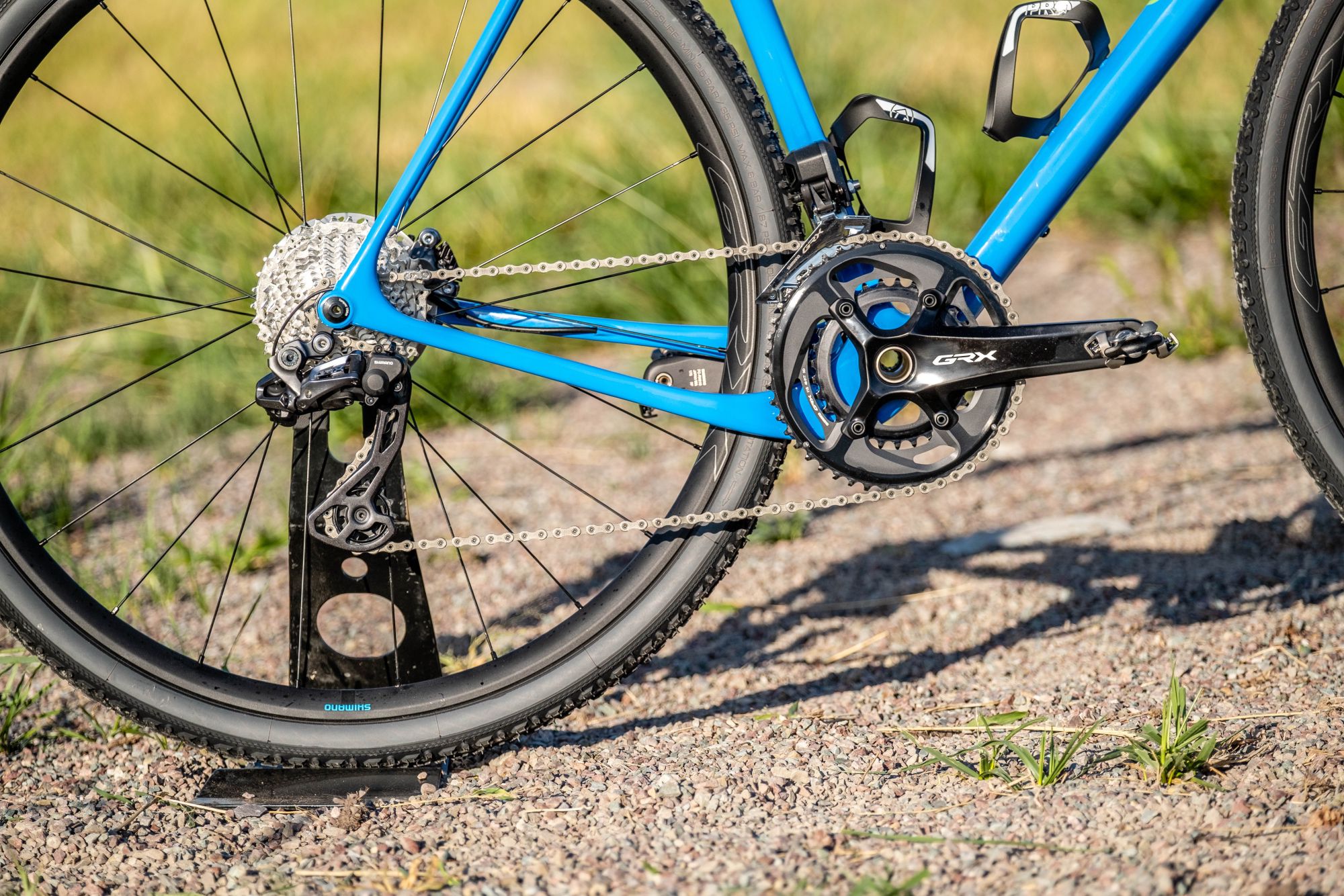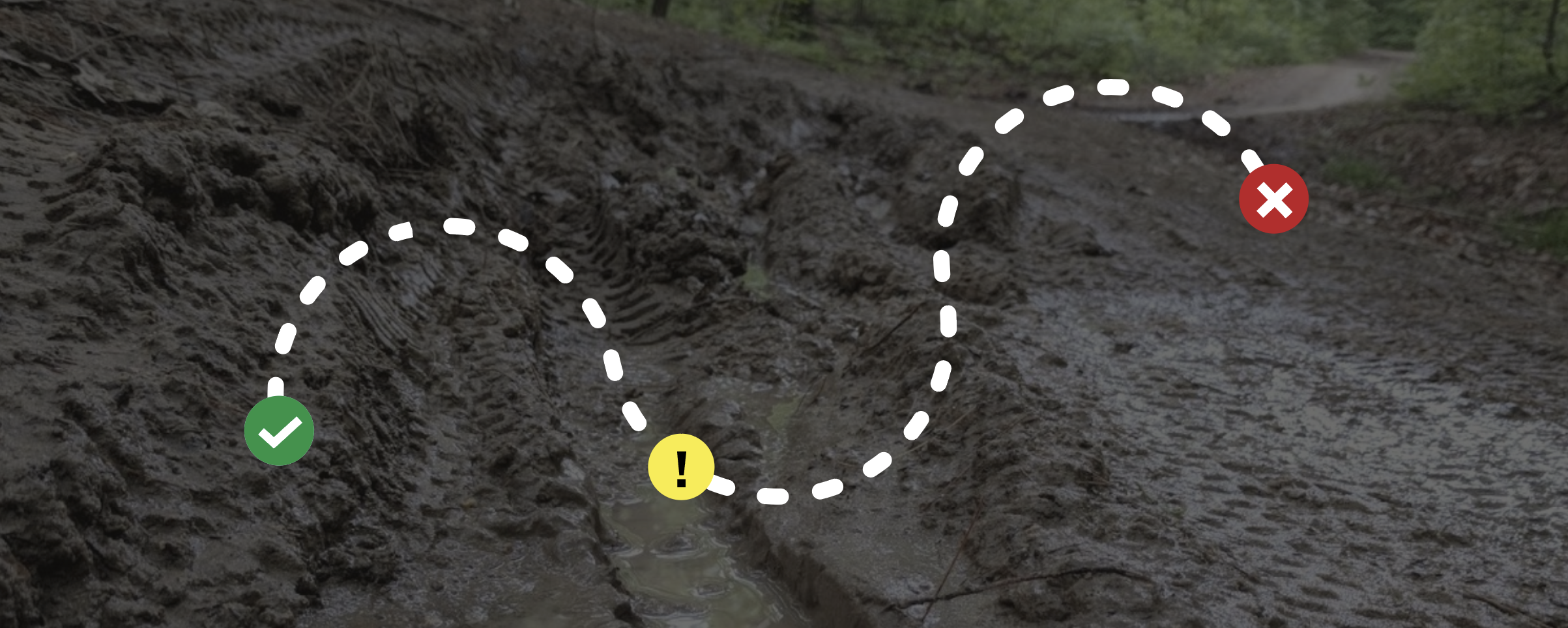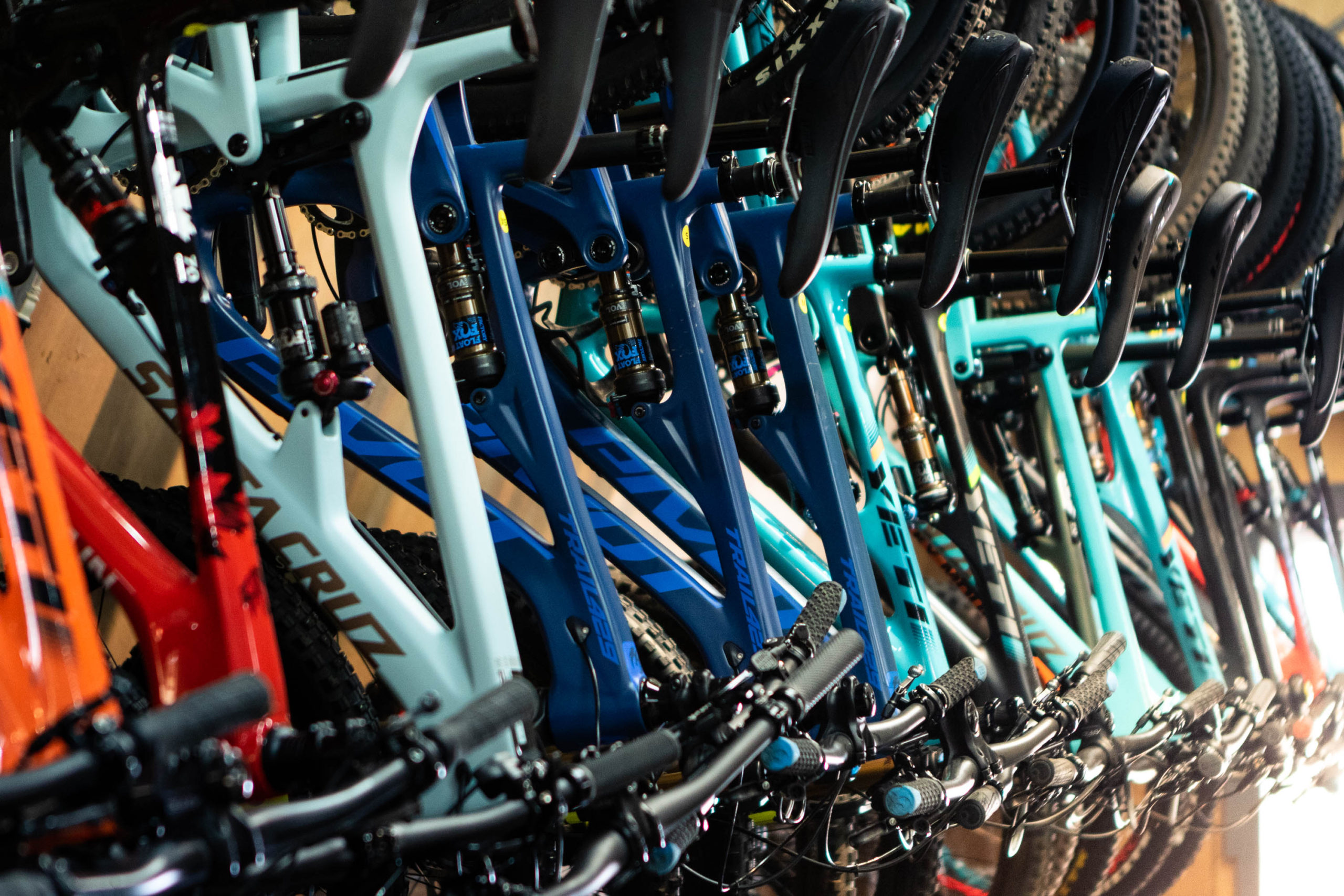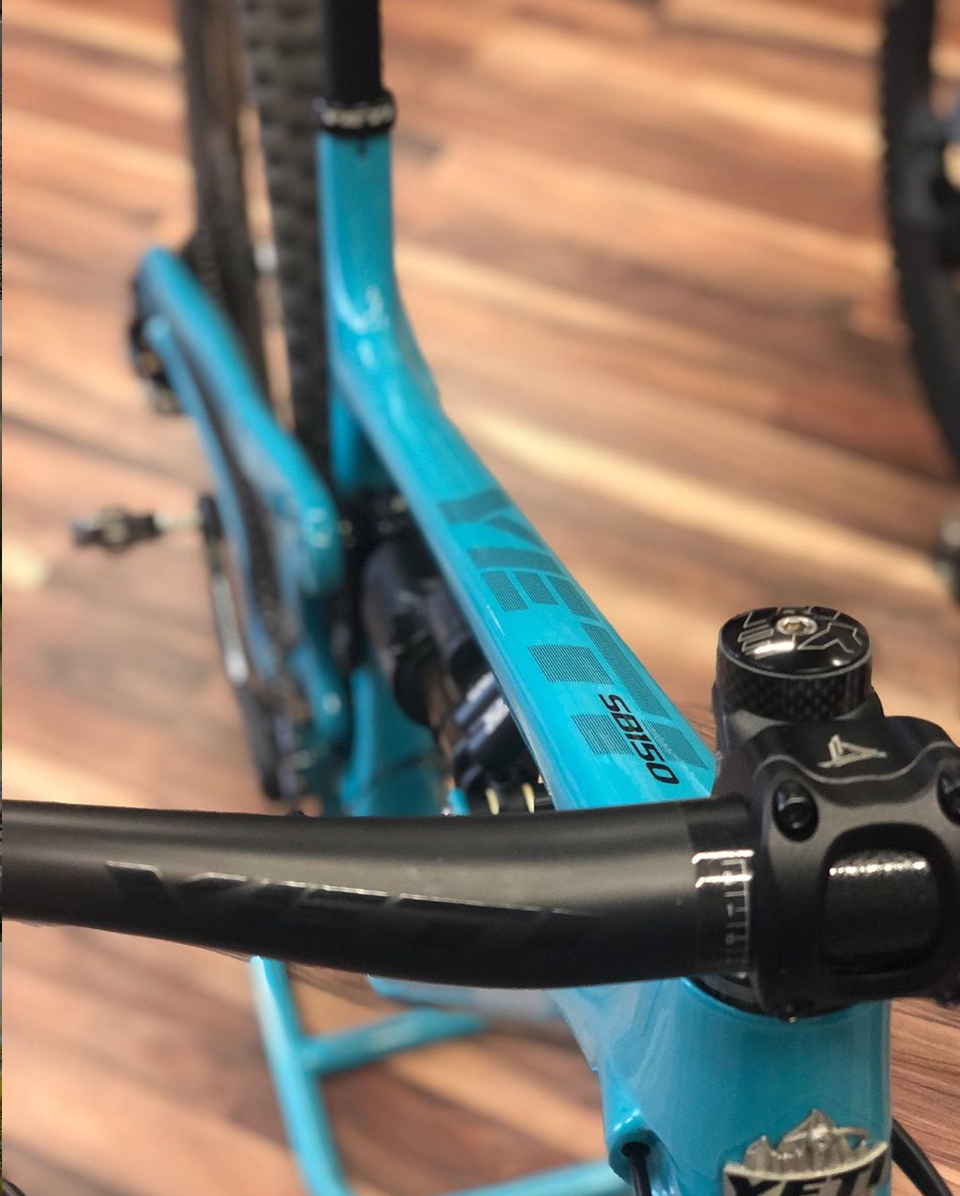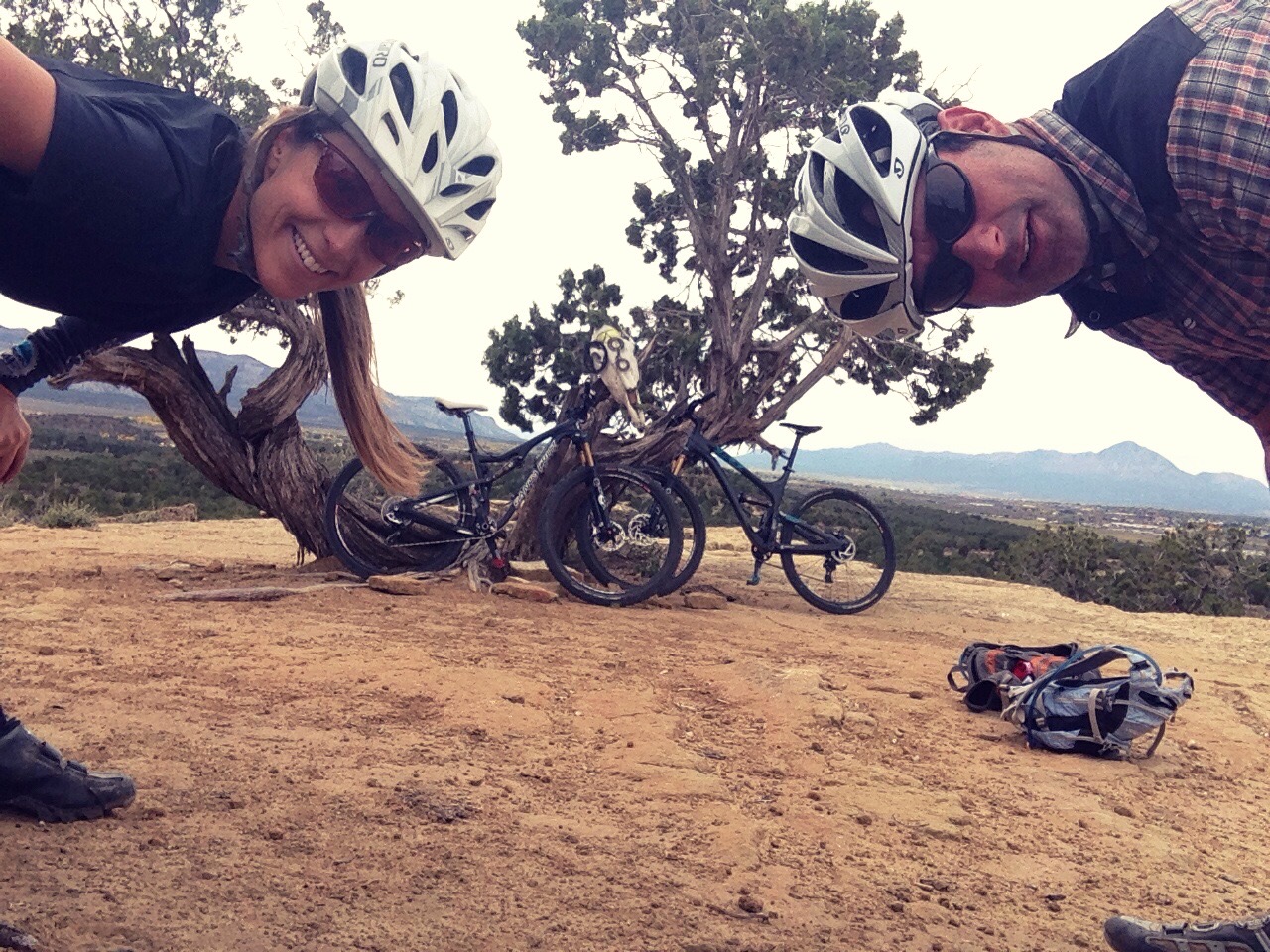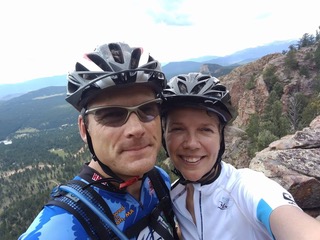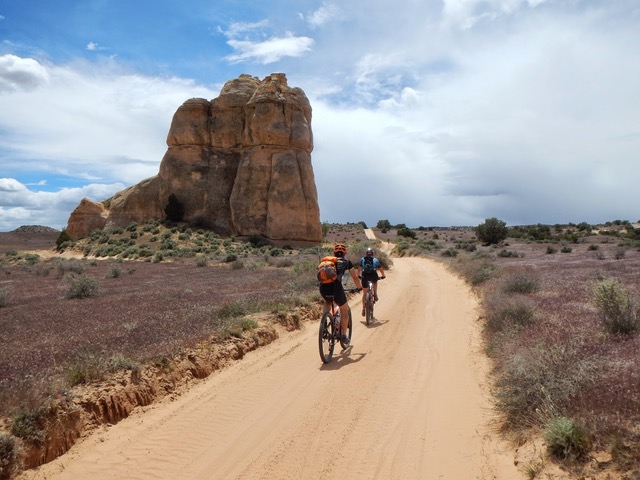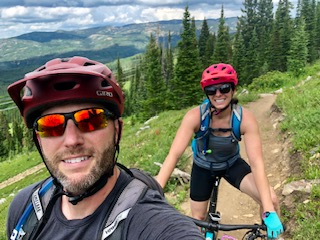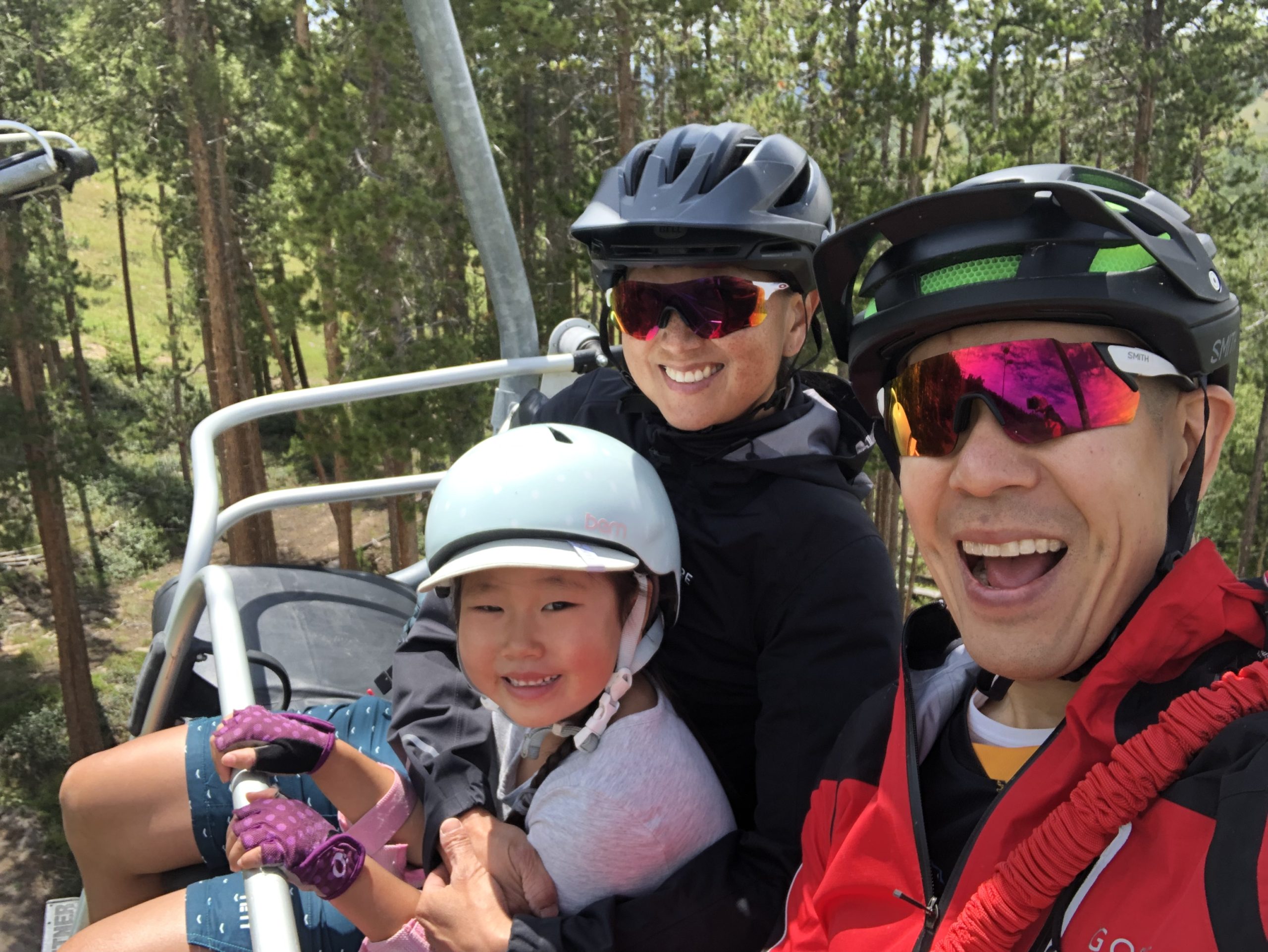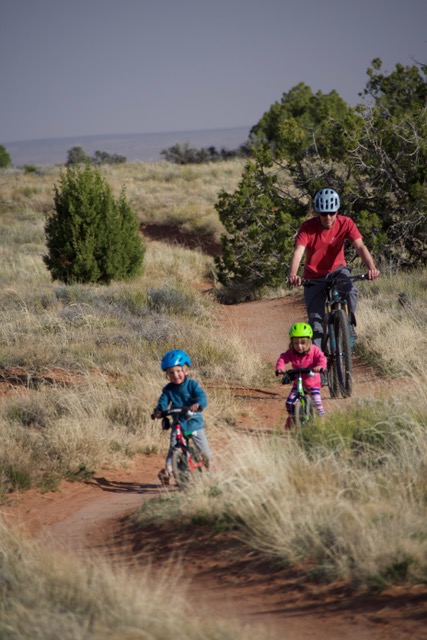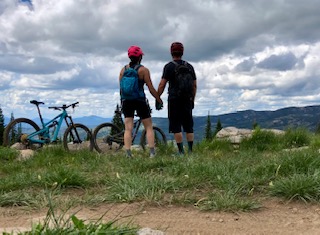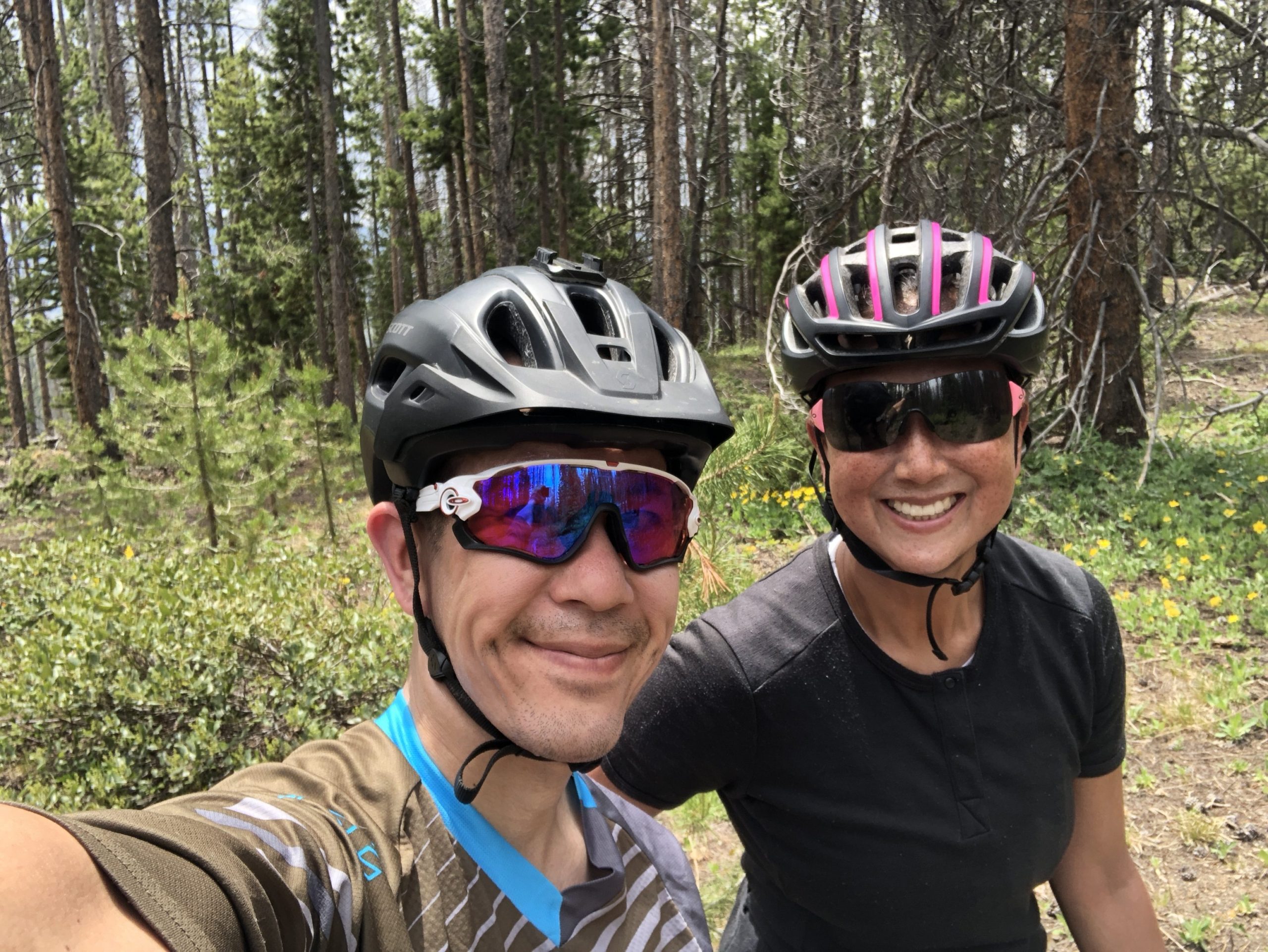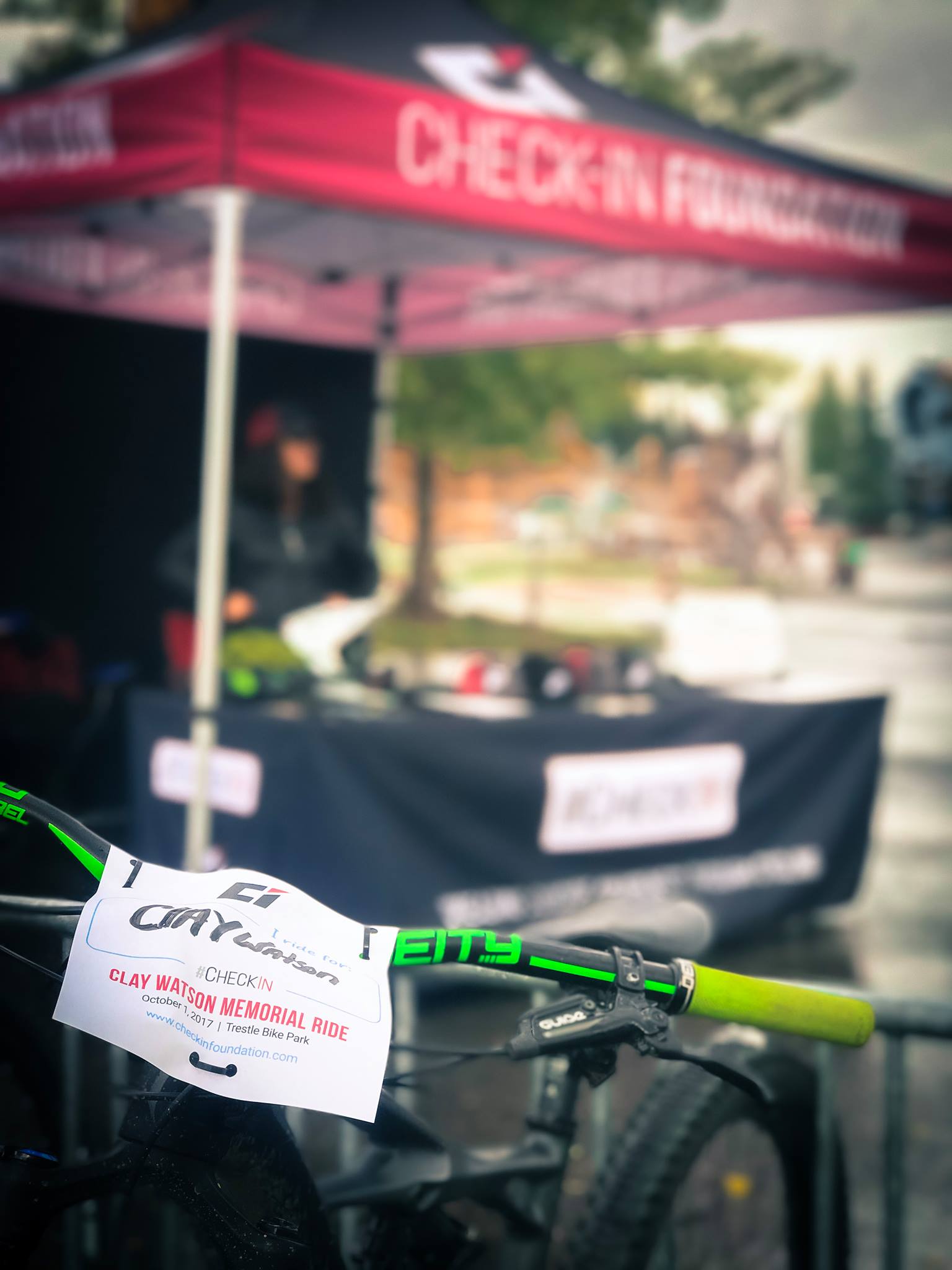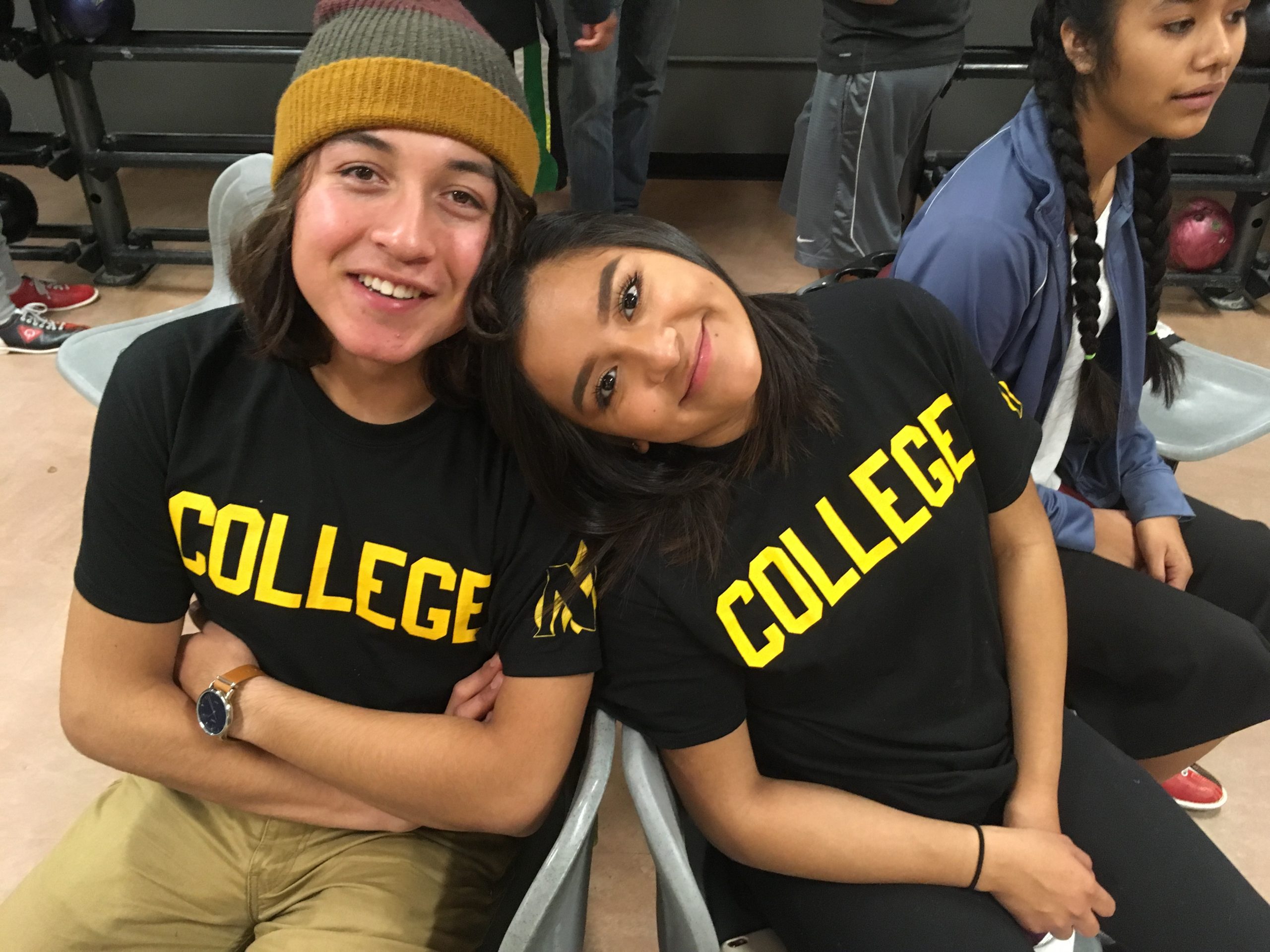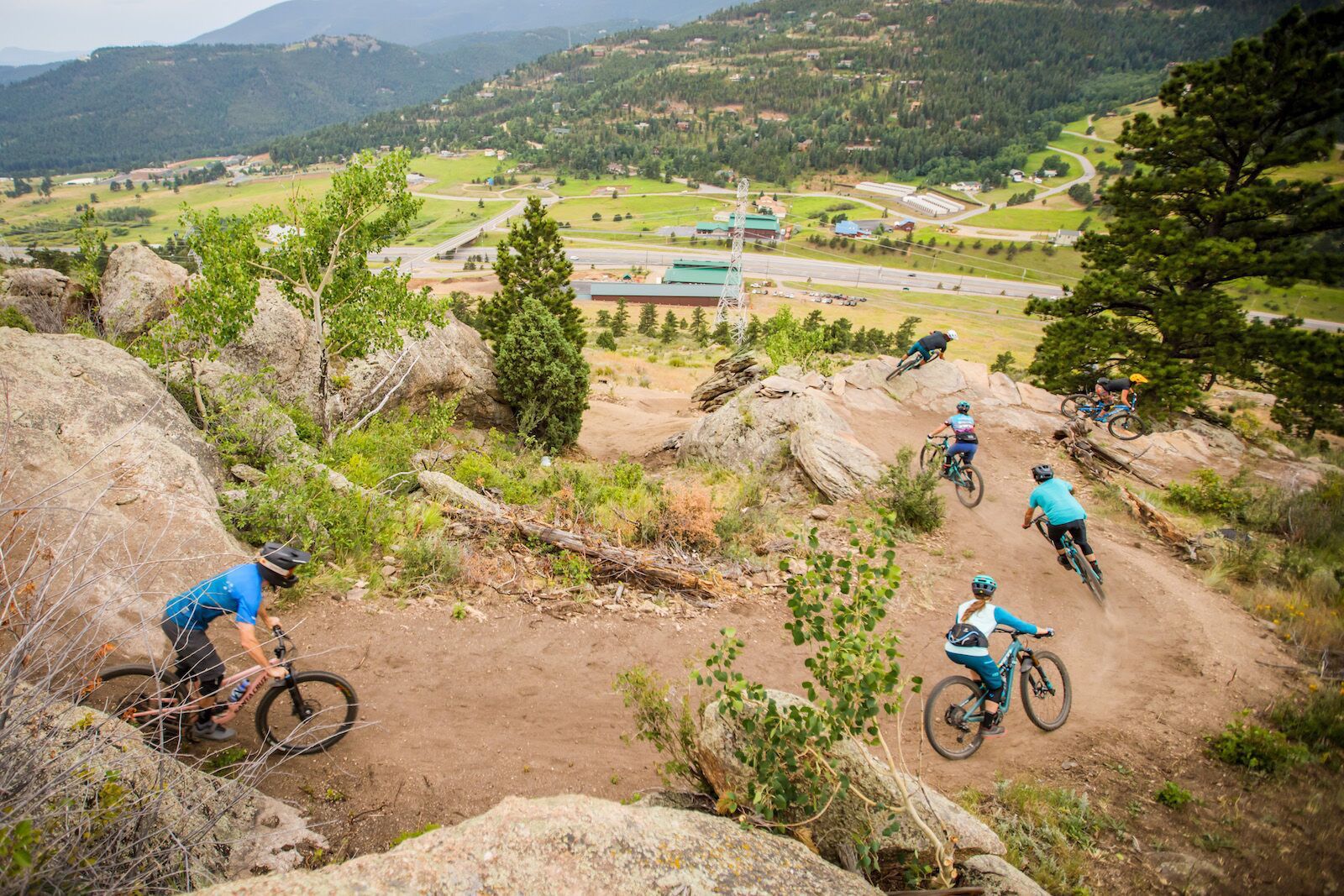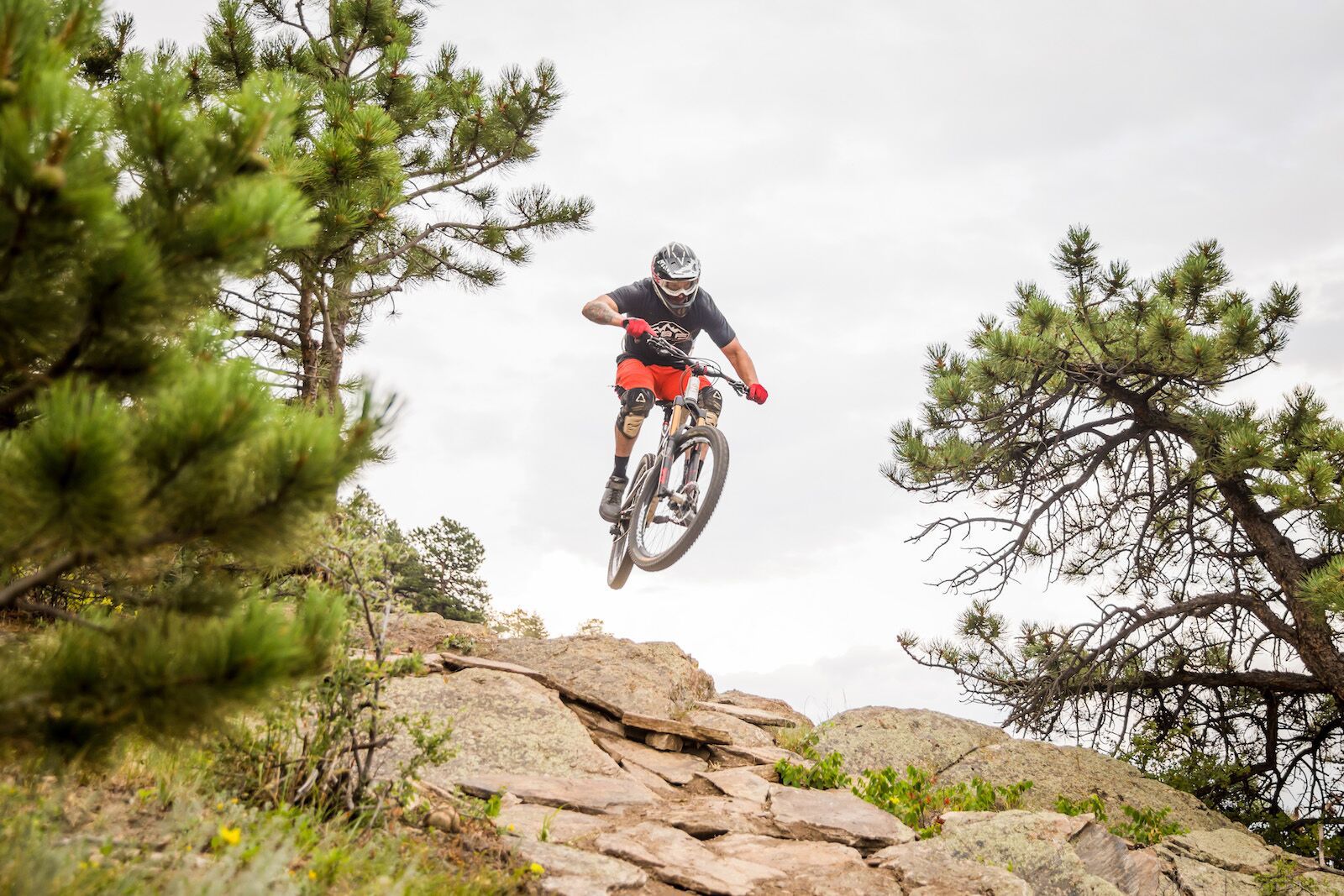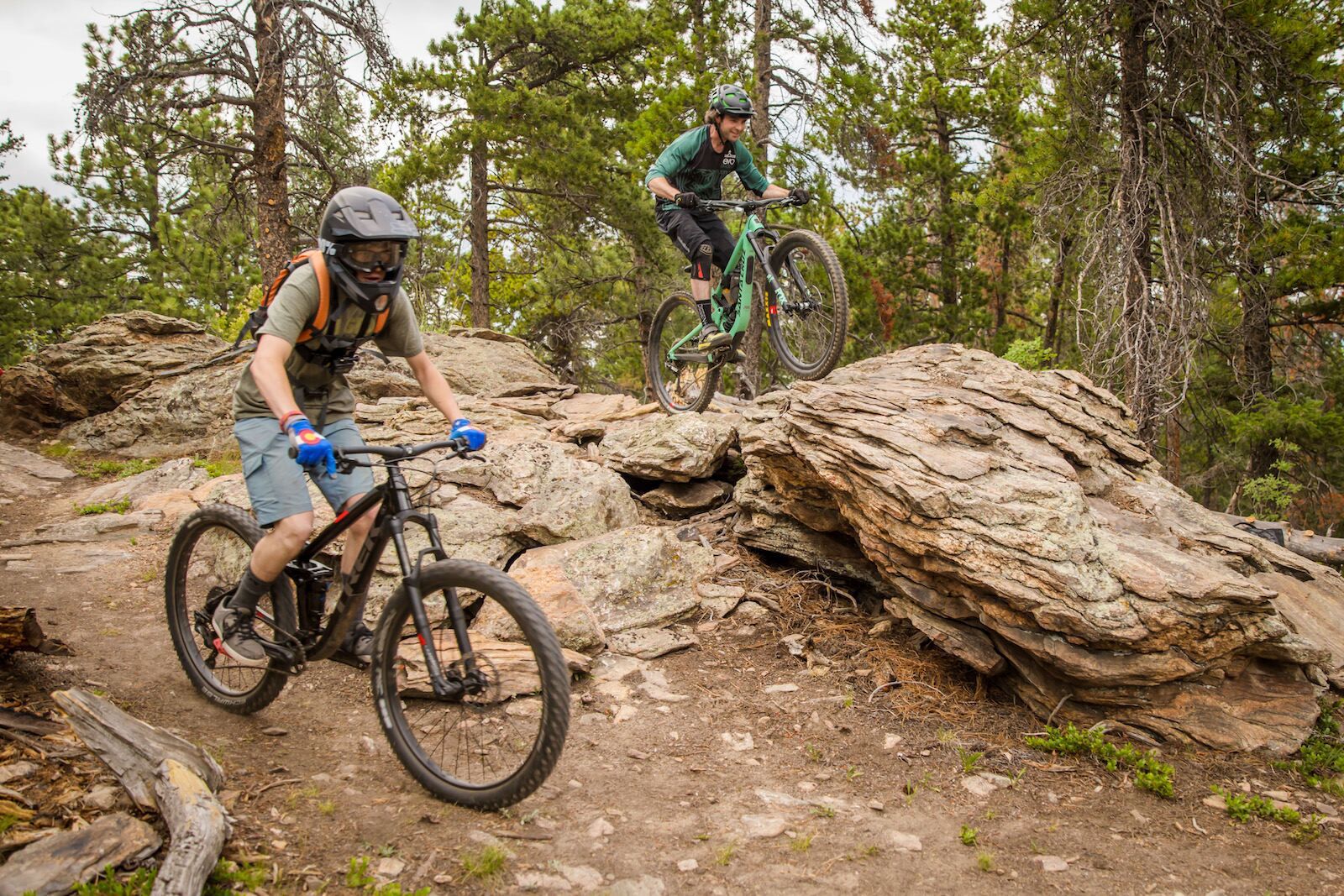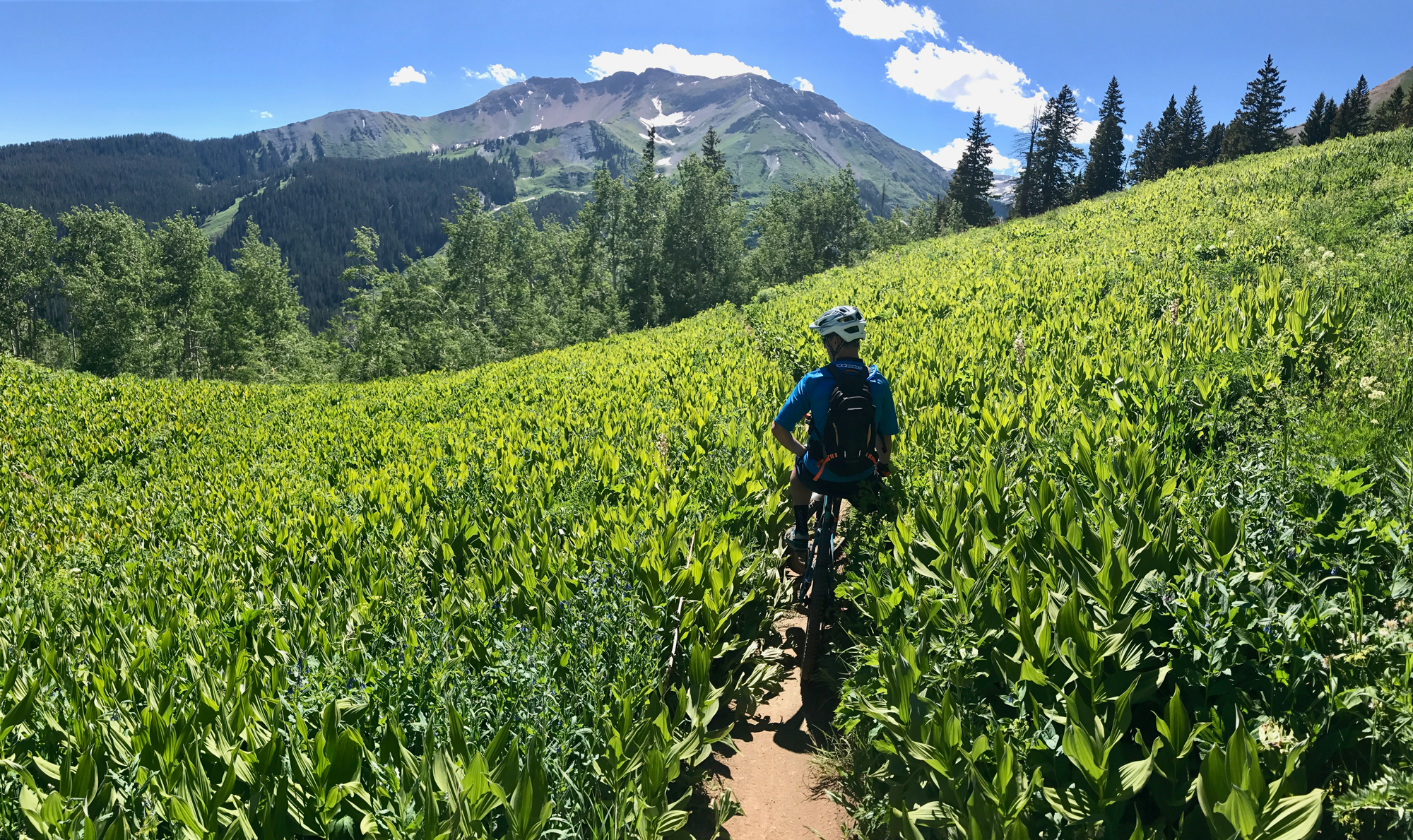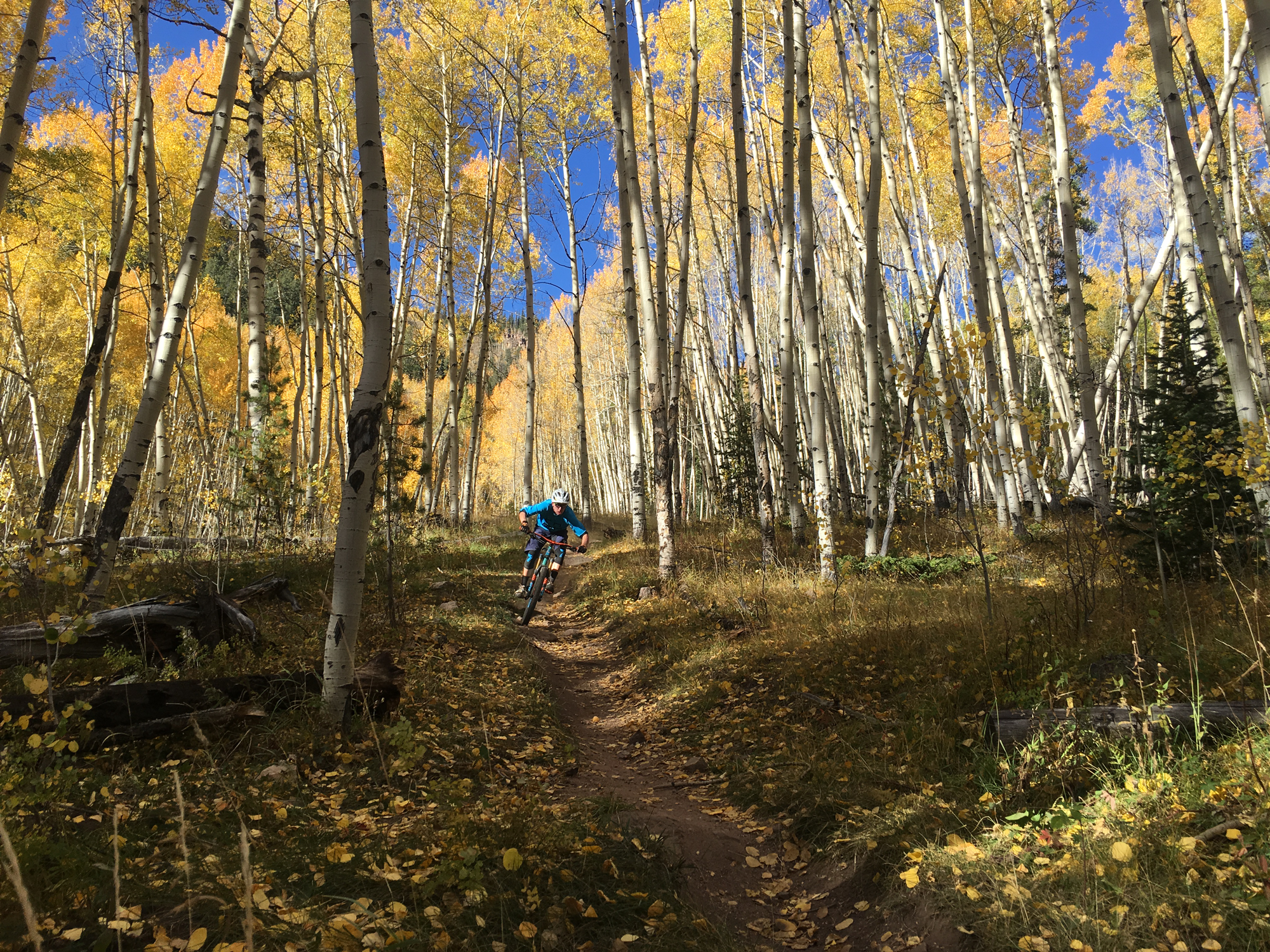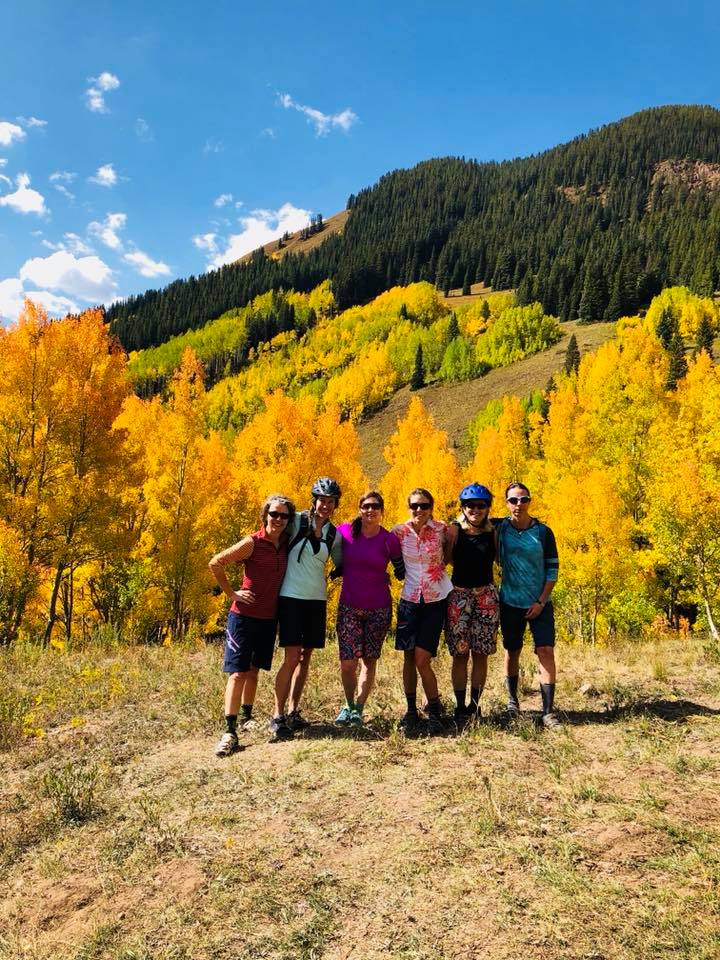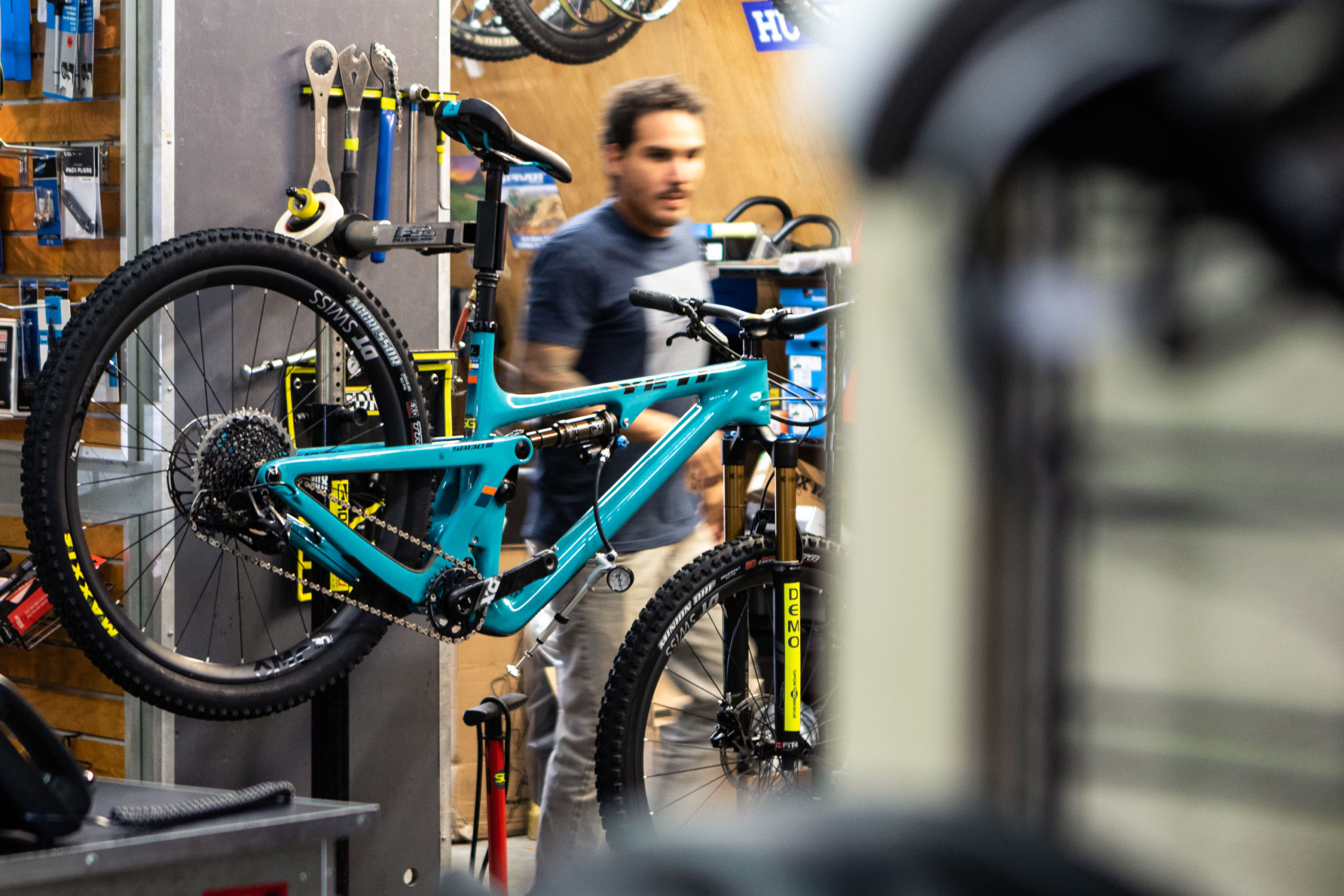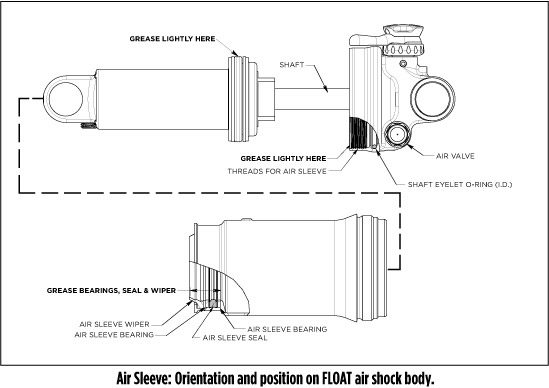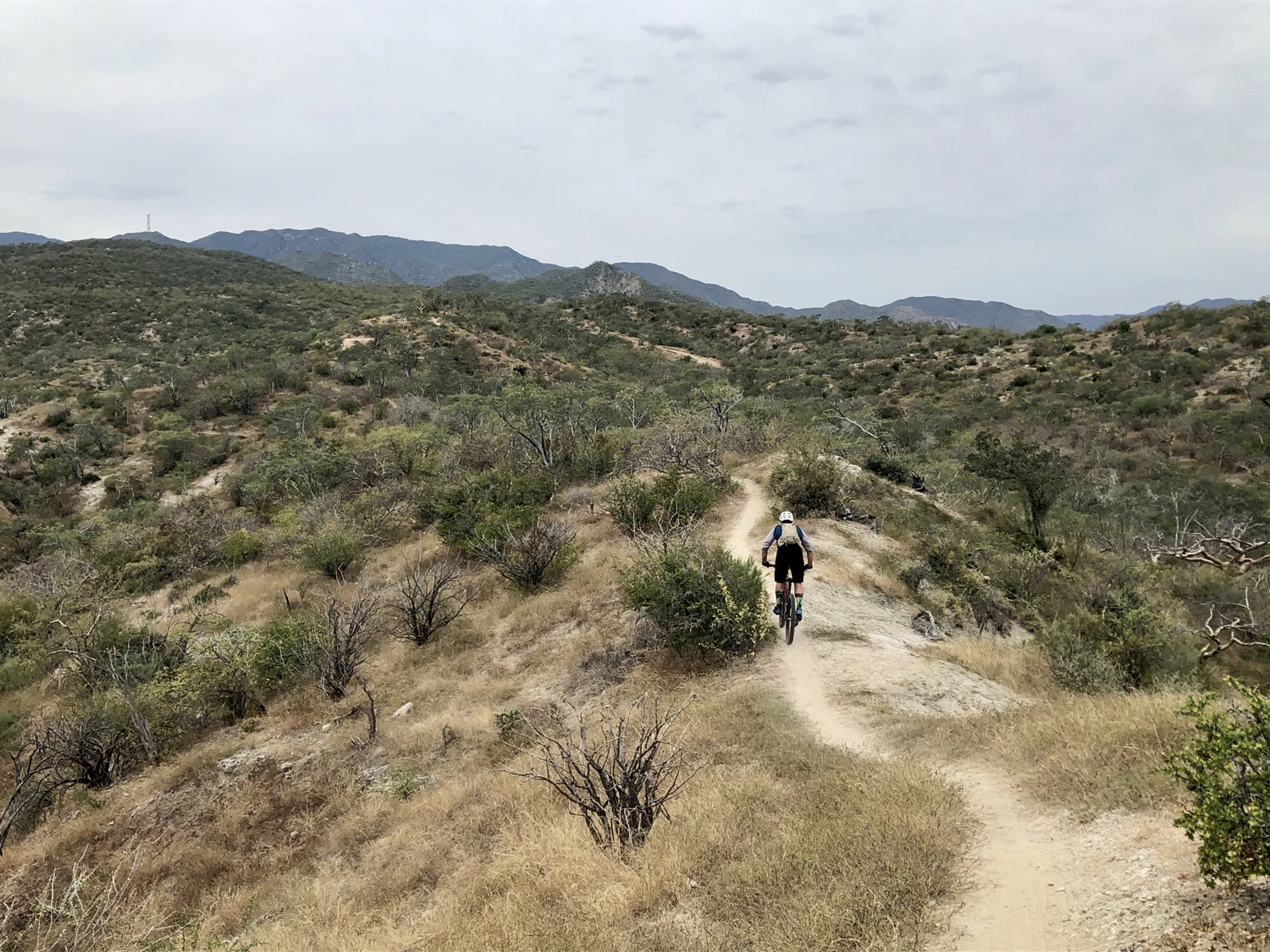
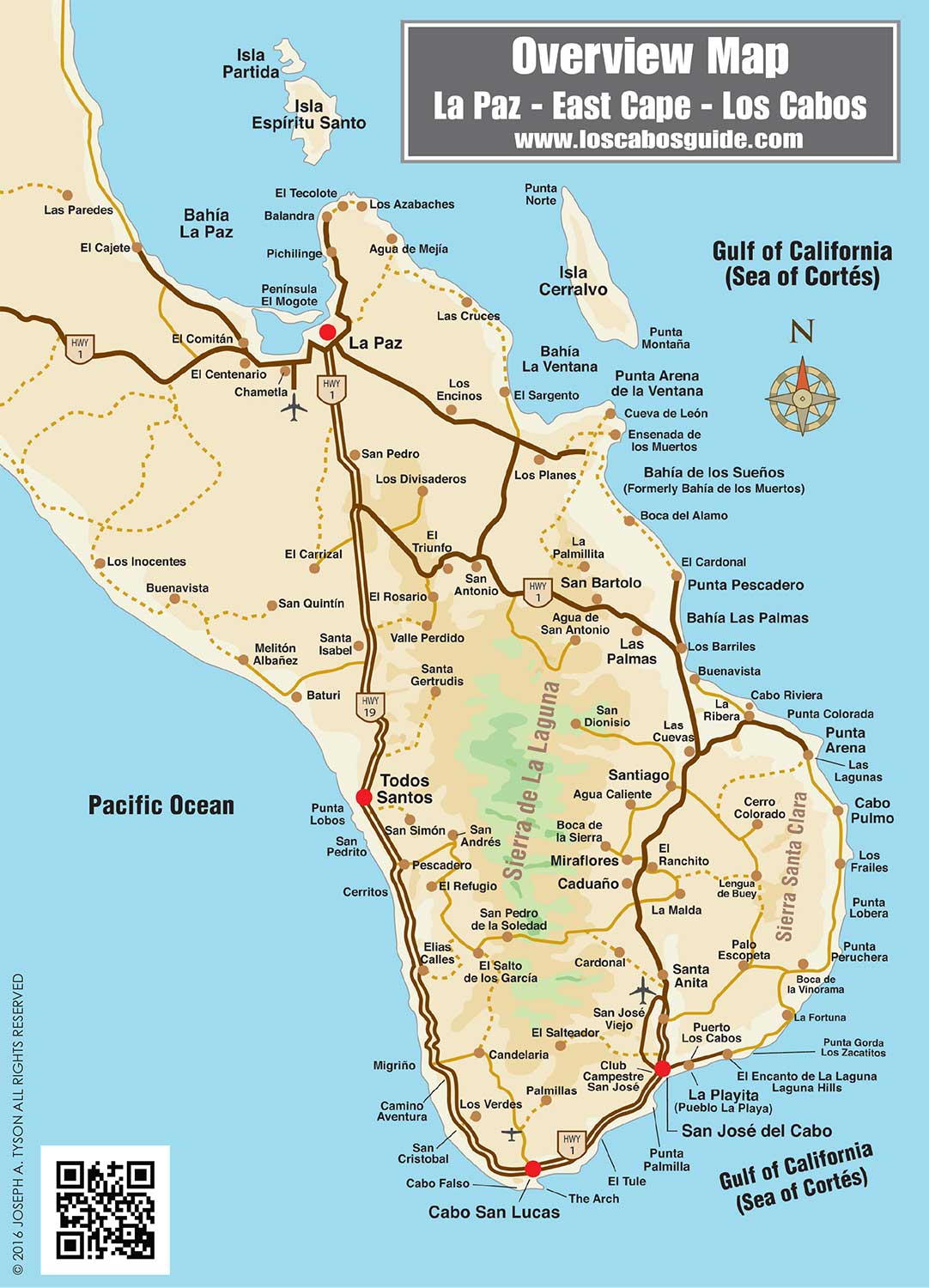
GEAR
- Large Trail 429 Pro X01, in an Evoc Pro travel bag (an extra 3” to 4” of space in the Pro version is best for the large frame)
- Small Rocky Mountain Instinct X01, in a regular Evoc travel bag
- Spare parts, including derailleur hangers, extra GX derailleur, SRAM 12-speed masterlinks
- Maintenance and flat repair supplies, including chain lube, hand pump, shock pump, standard flat repair (no C02), multitool, and a few spare wrenches
- Hydration packs
- Riding gear
- Headlamps
TODOS SANTOS
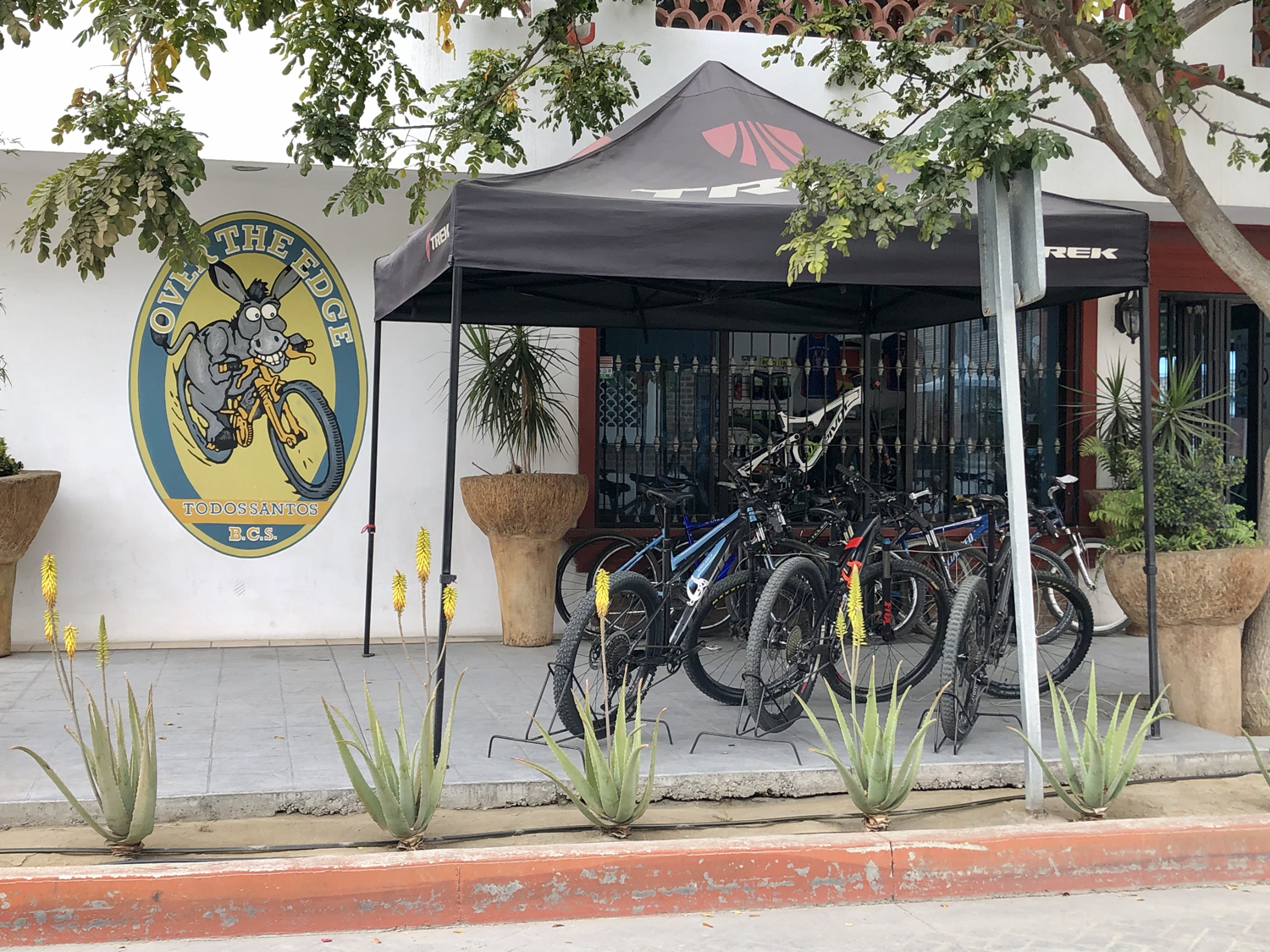
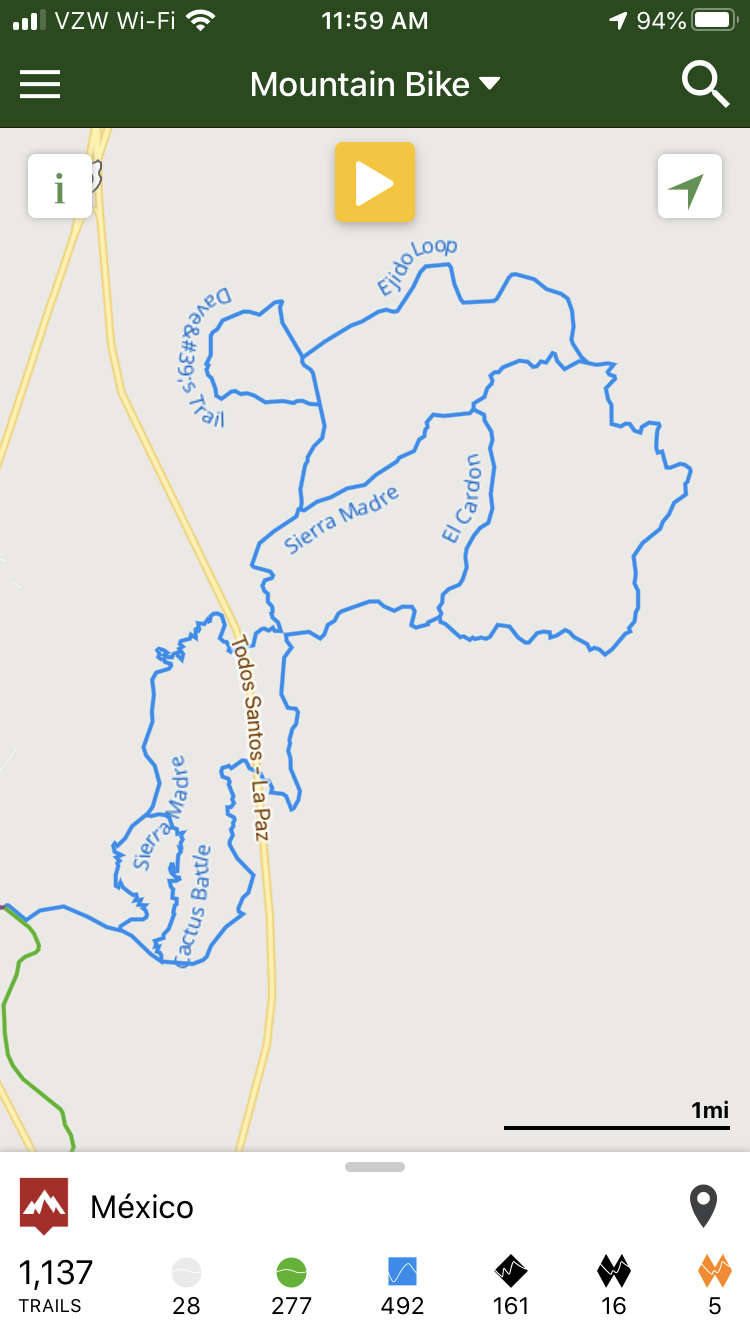
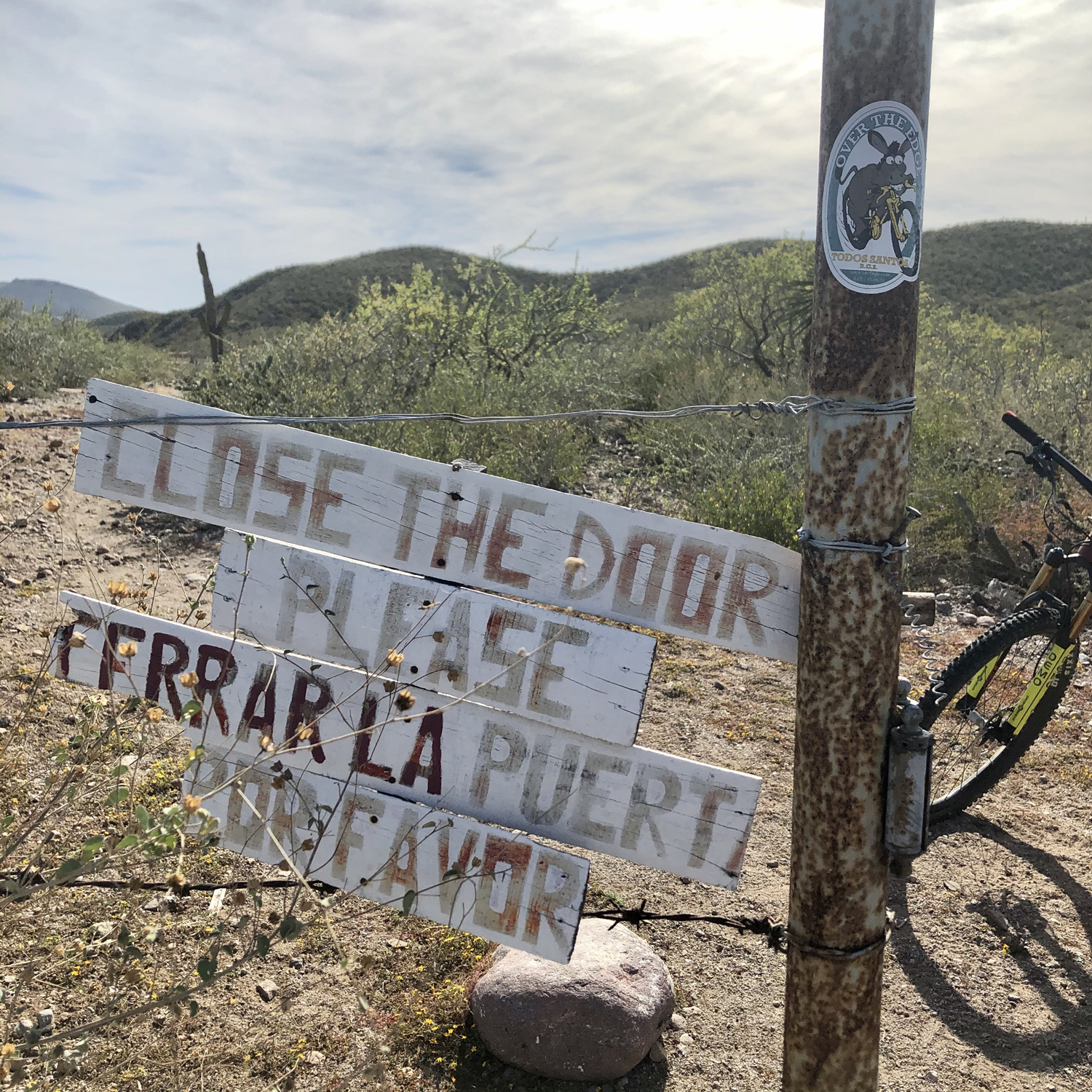
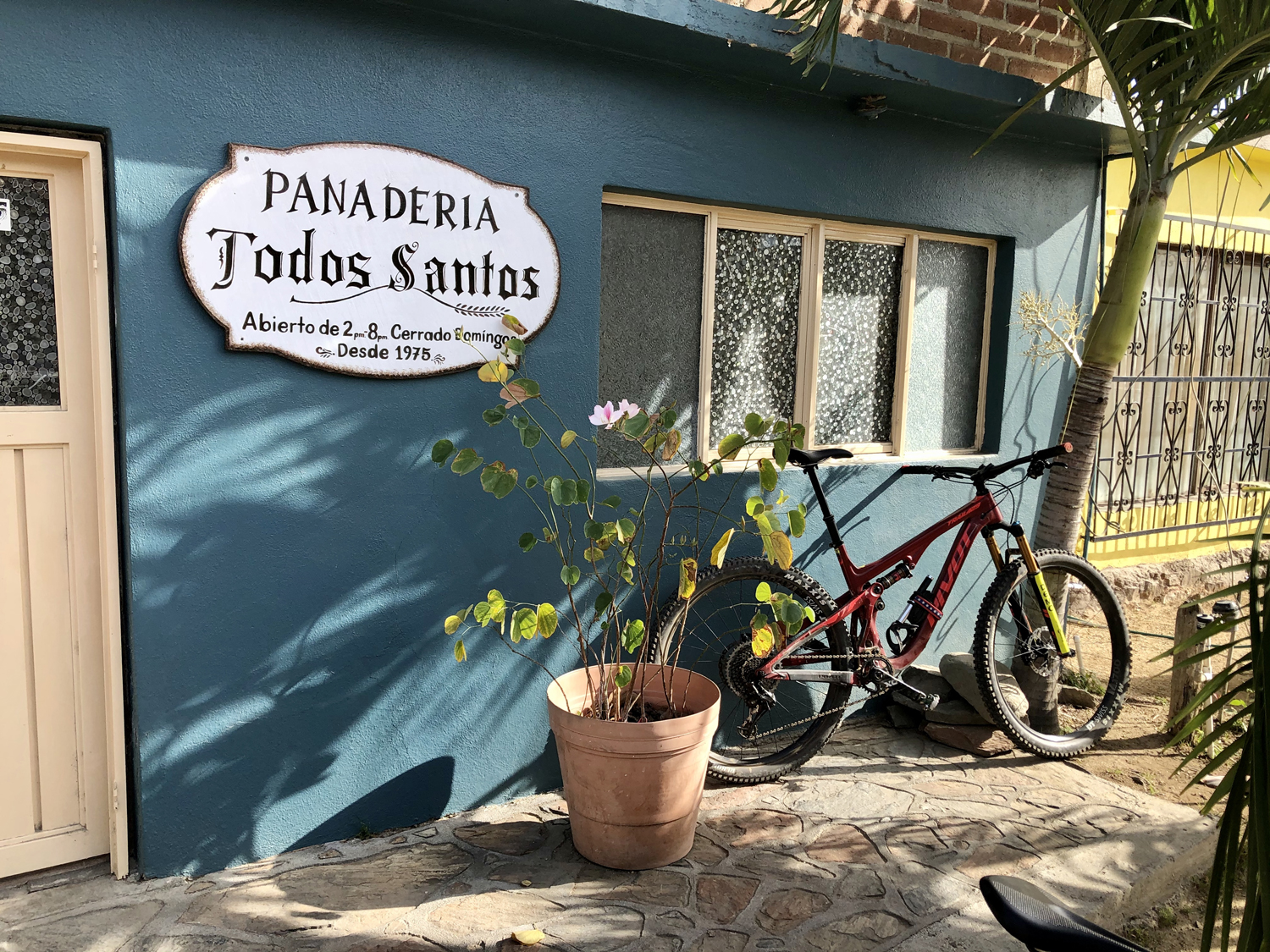
LOS BARRILES
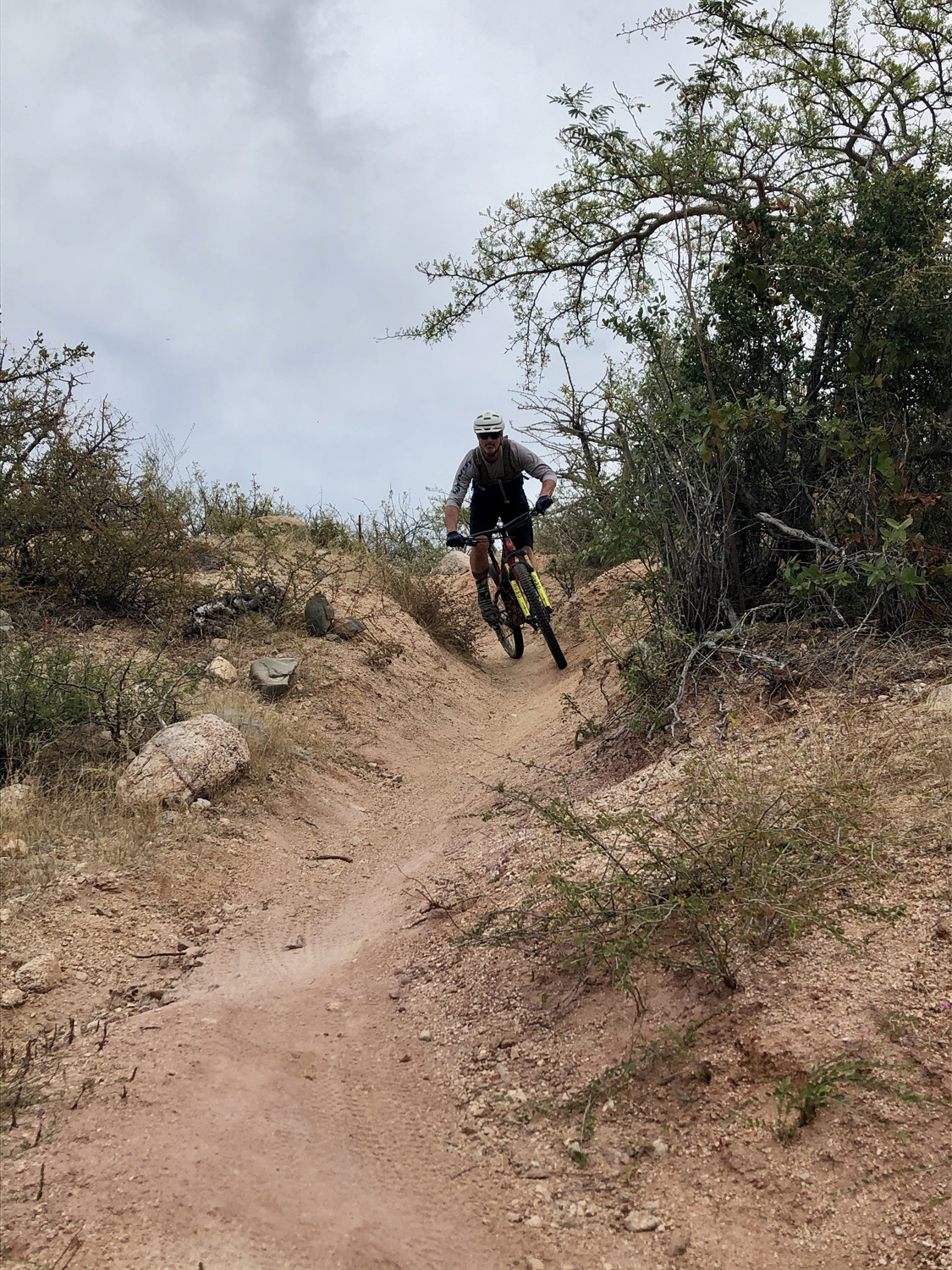
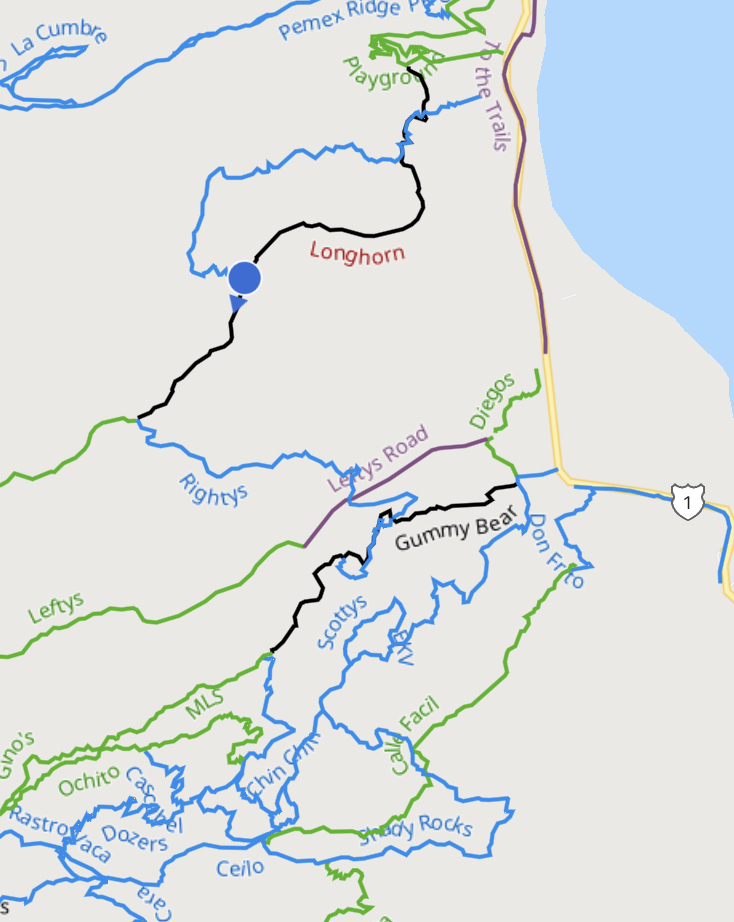
A screenshot of our location, heading down Greenhorn, the blue trail to the north, yet so new the name didn’t appear on Trailforks.
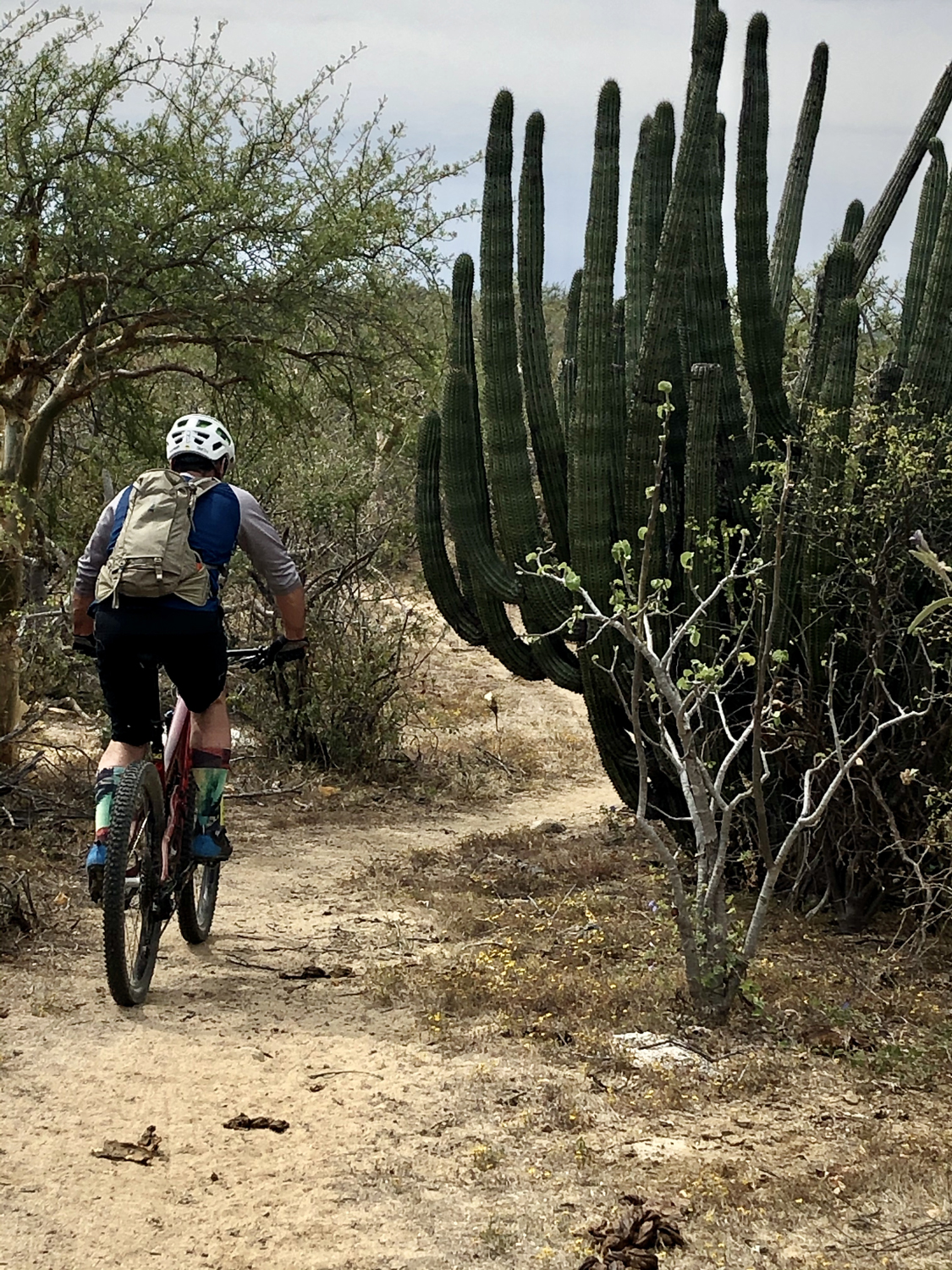
Brad at the Longhorn/Greenhorn intersection.
3.5 – 4 hours: climb Scotty’s to Shady Rocks to Vista to Lejos. Ride Jupiter clockwise, and descend via Cielo, ChinChin, and Gummy Bear. The canopy changes as you climb Vista to Lejos, with more foliage and shade. Heading up to the massive granite boulders on Jupiter, we felt like we were leaving the seashore altogether. It’s worth pulling out your trail app to navigate through the intersections to descend ChinChin and Gummy Bear.

4+ hours: Link it all together via Gummy Connector, starting with the Scotty’s / Vista / Lejos climb. Adding the Corrales and Mars/Rastro Vaca loops to the Jupiter and Cielo. Halfway down Gummy Bear, turn north on Gummy Connector to get back over to the Righty’s climb. Descend Greenhorn into town.
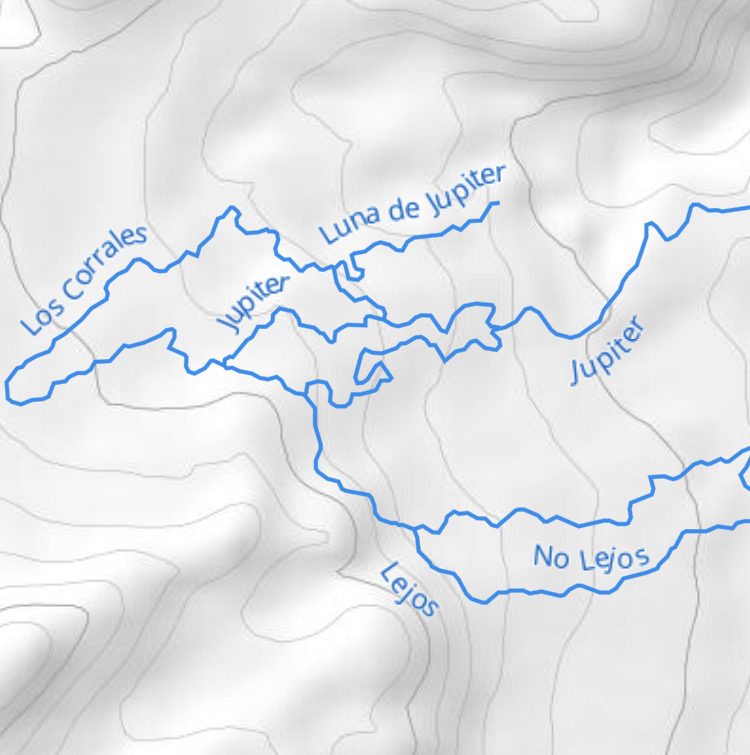
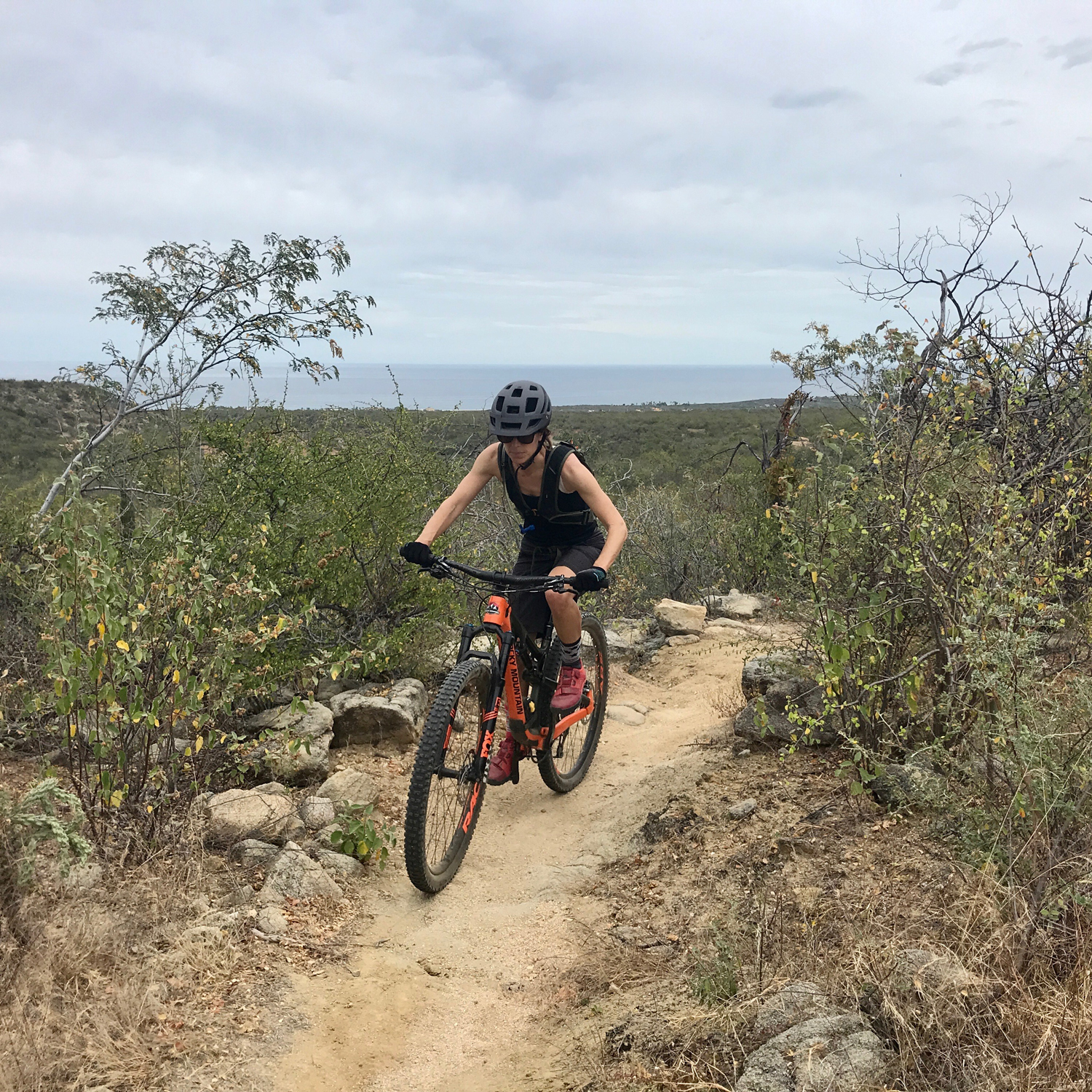
1. They’re not super easy. The trails are sometimes rocky with plenty of kitty litter, the climbs are punchy, the margin for error is slim, and the corners are hard to cut. But that’s not a good reason for a publication dedicated to adventure an exploration to overlook an awesome experience.
2. “The Baja Wheelchair”: LB is largely populated by retired ex-patriates who traverse town and the beach on four wheelers with milk crates strapped to the hood. Before arriving, we had heard Los Barriles referred to as “Gringolandia”. The charm is, shall we say, hidden.
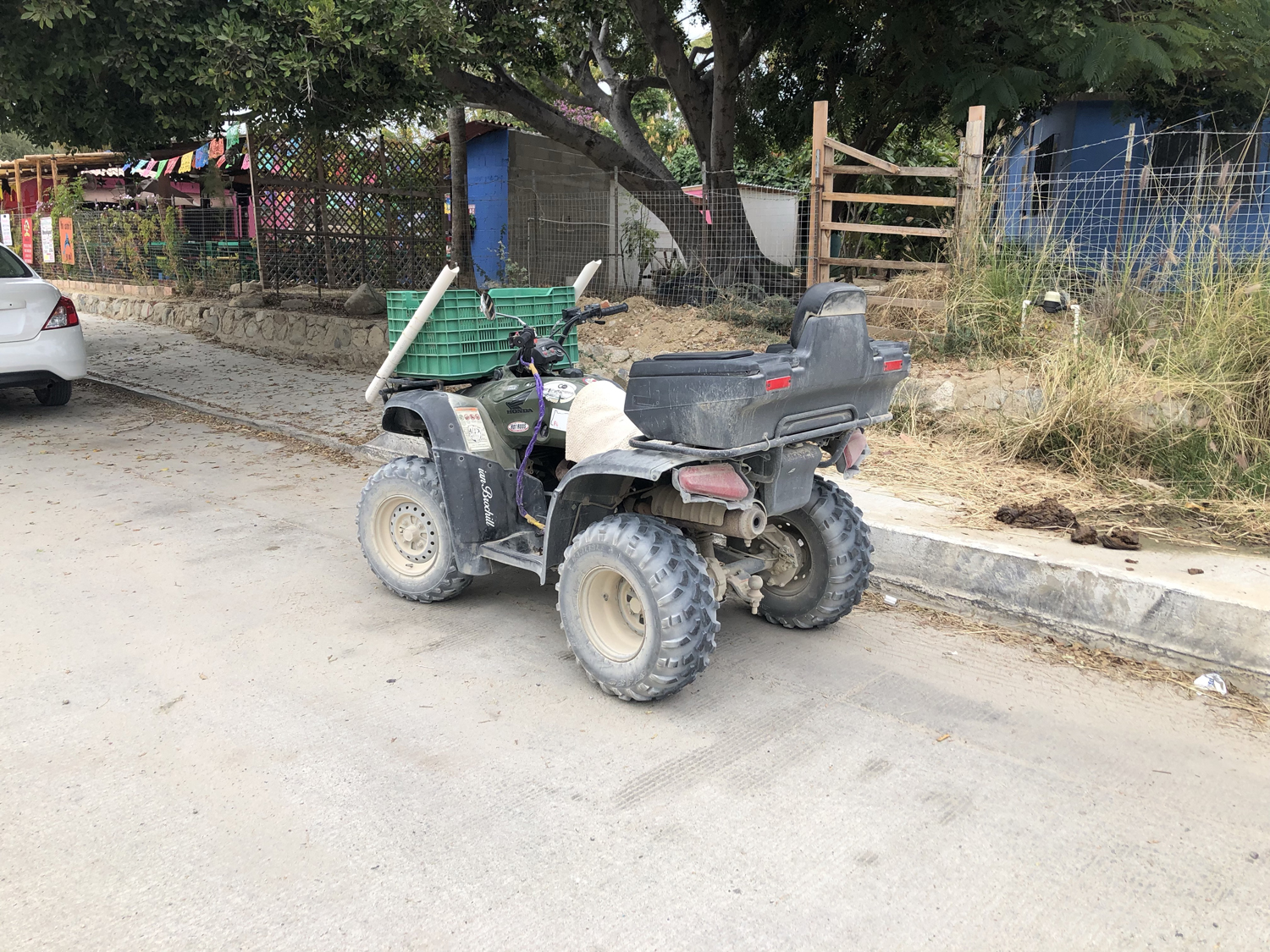
The Baja Wheelchair
LA VENTANA

Nearly dark on a nearly deserted Pacific beach.
Businesses we enjoyed in Todos Santos
- Pura Vida Health Food Store – Staying at a casita with a kitchen, we cooked most of our meals, sourcing ghee, local honey, almond milk, and our other pantry items at Pura Vida.
- Caffé Todos Santos – near Calle Centenario, there are entrances at both the front and rear, and a hometown vibe.
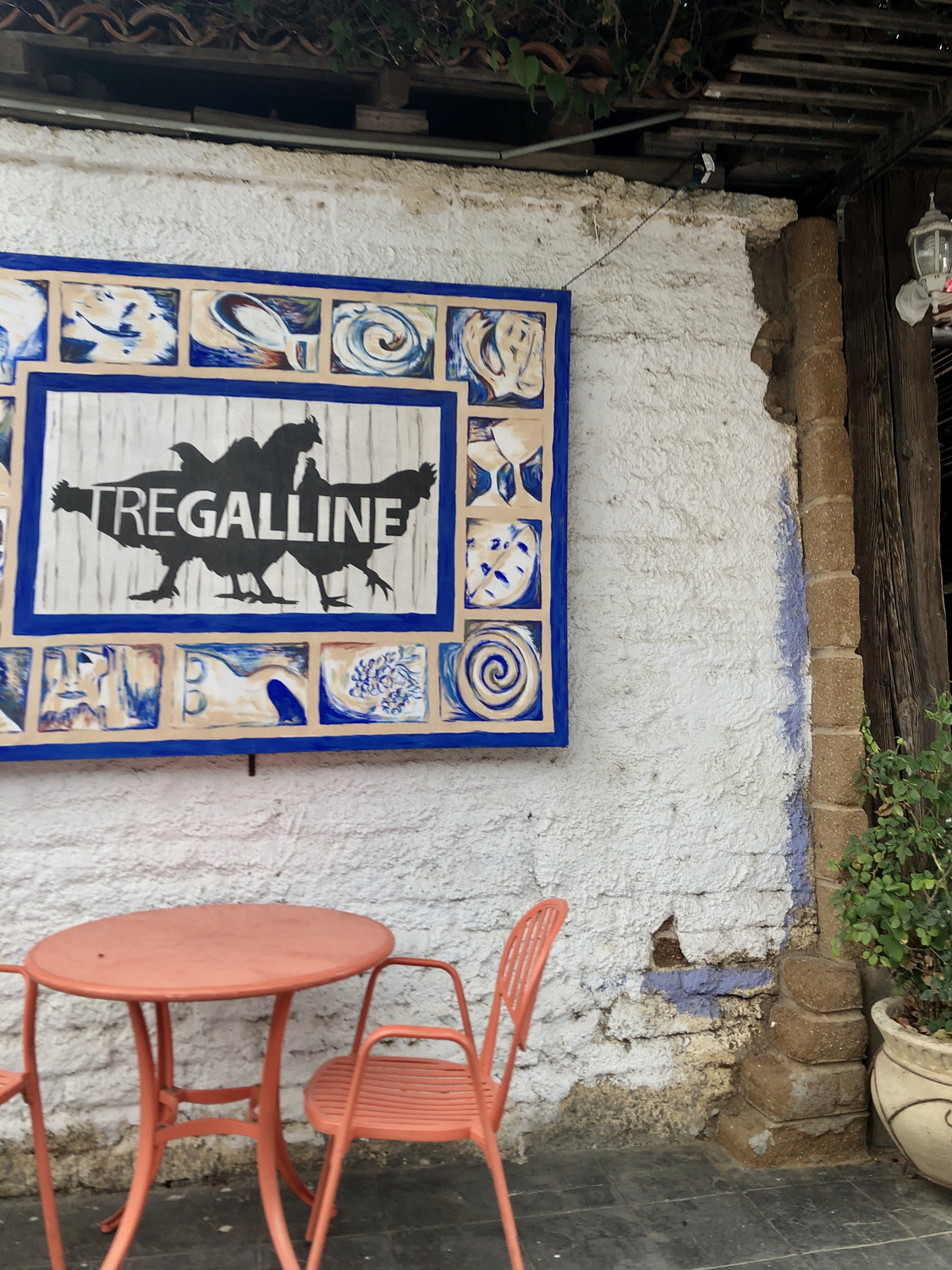
The rear entrance to the Caffé, where the wifi connection and coffee were both strong.
- The local pasteleria – we stumbled upon the local bakery late one evening while taking a walk. Six pesos each for empanads de queso, sugar cookies, and other delightful treats. “Stumble upon” are the best directions we can offer.
- Docecuarenta – A decidedly upscale and delicious coffee roasting company based in La Paz has opened a slick new location just outside of downtown. If Mexico’s dusty backroads having you missing an urban vibe, this is the place.
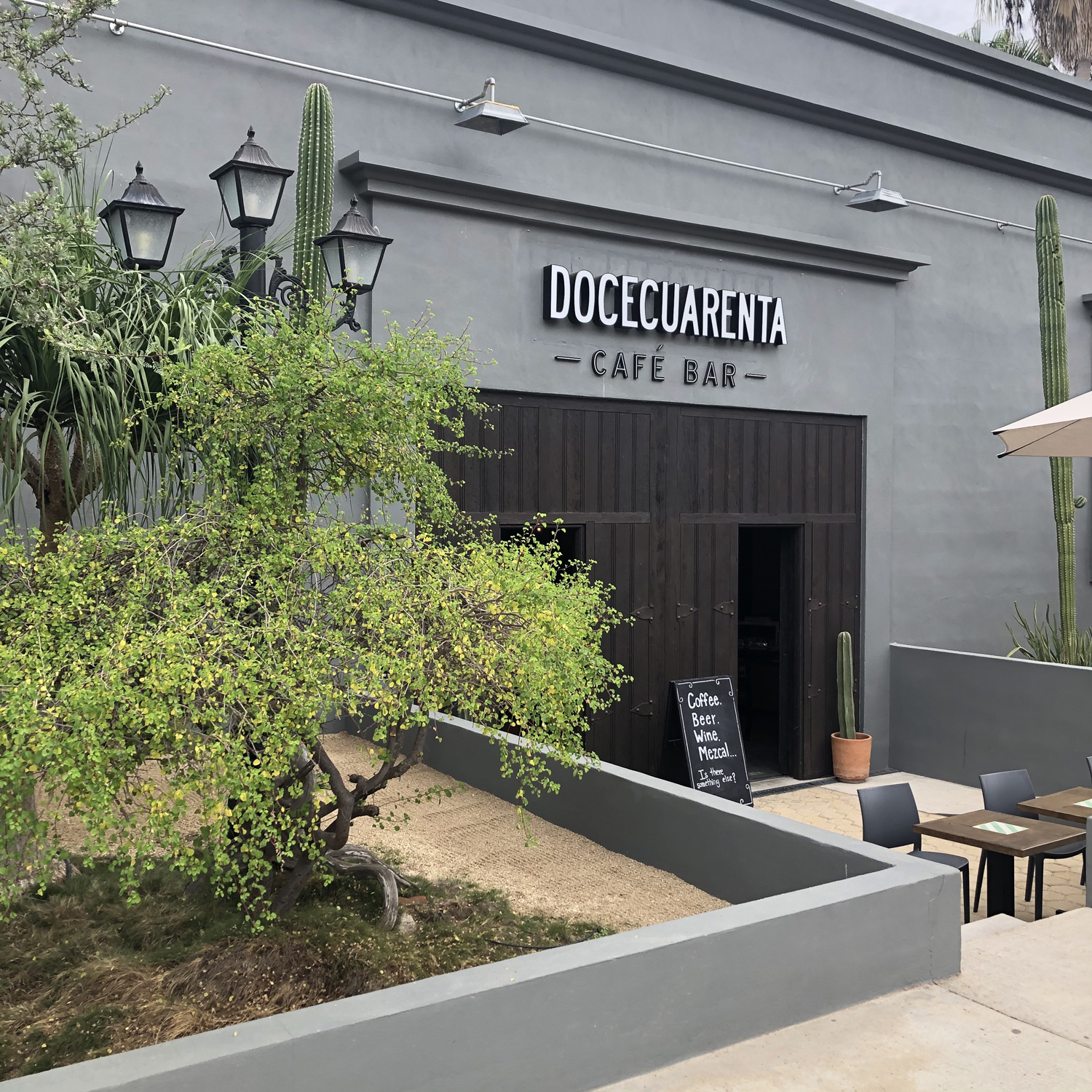
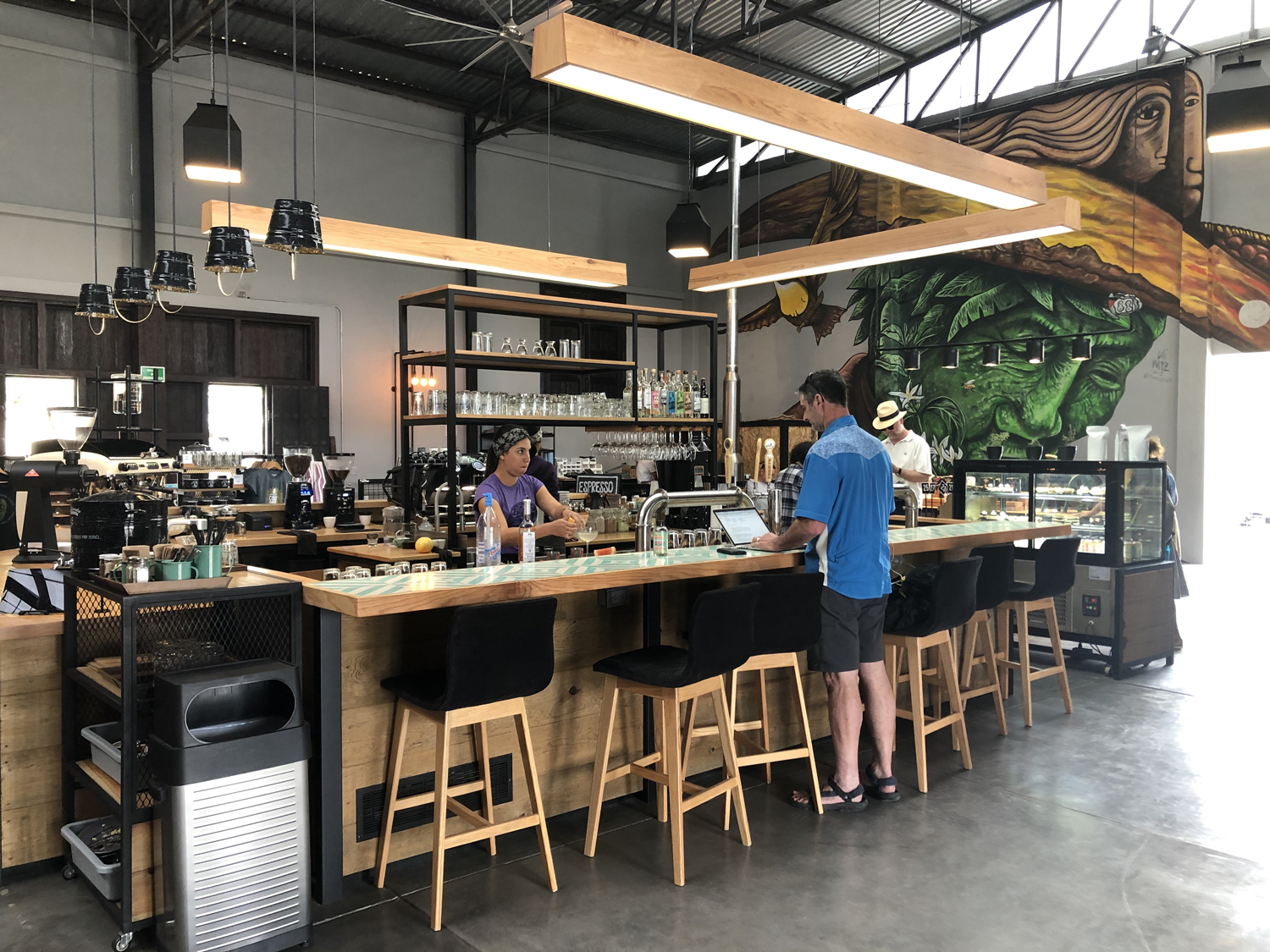
Camping out for a few hours of pre-ride remote work at Docecuarenta.
Businesses we enjoyed in Los Barriles
- Joe’s Deli – A local entrepreneur, Joe was born in Ensanada, BCS, raised in Northern California, and now calls Los Barriles his personal and professional headquarters. This unexpected fine food grocery was our home away from home, and we stopped at Joe’s every day for his wife’s homemade chocolate chip cookies.
- Spa Vida – This sweet day spa with a palapa roof sits behind Joe’s. El enjoyed a facial and massage with the local girls.
- Tres Palapas Pickleball Resort – Five bucks for three hours of “happy hour” court time! And the only place in town we found veggie tacos.
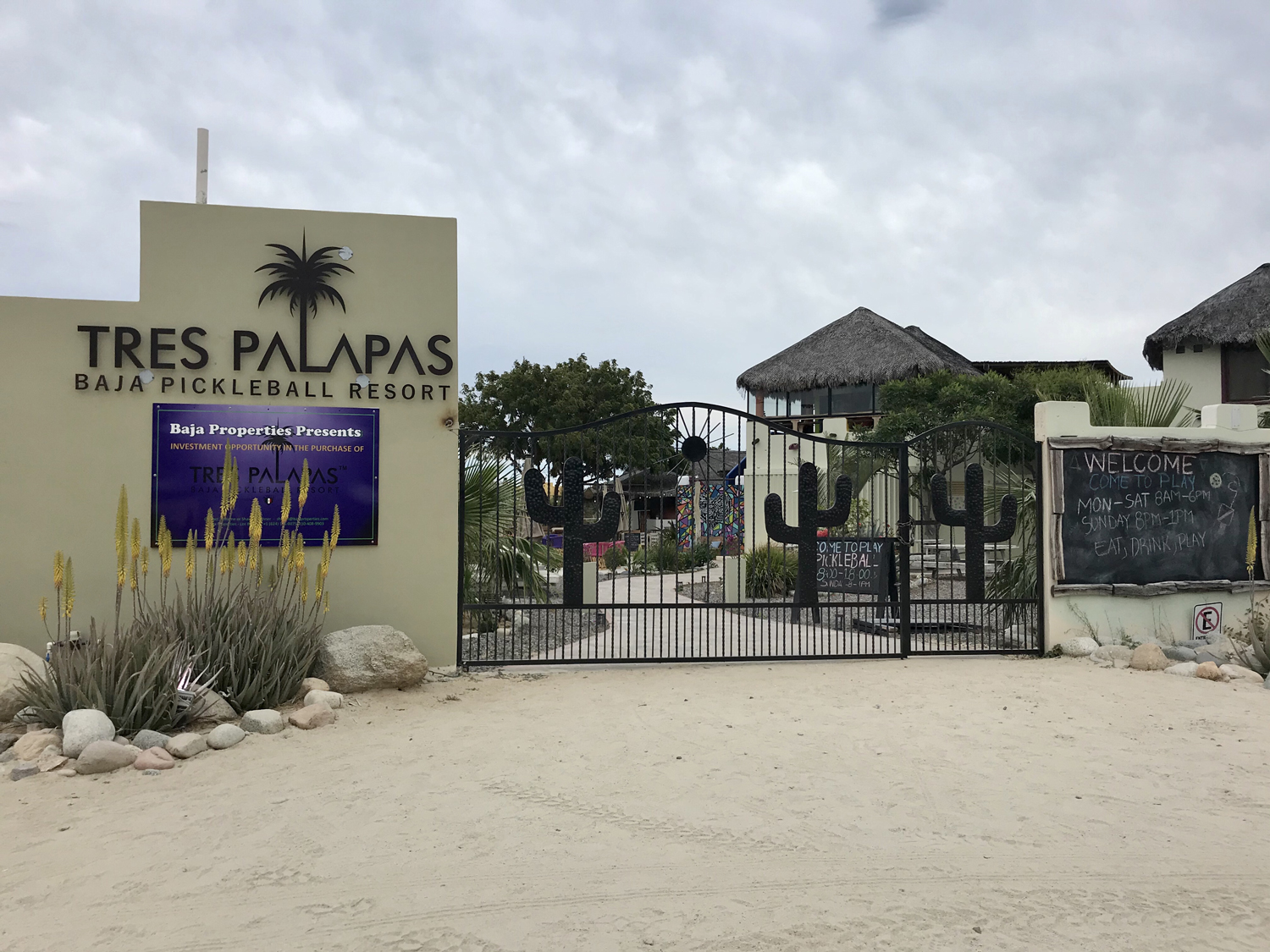
Purple pickleball courts and fresh guac near Buena Vista beach.
- Café Encinalito – This is the best coffee, smoothies, and coconut macaroons in town. The open air café is a laid back social hub for adventurers in town.
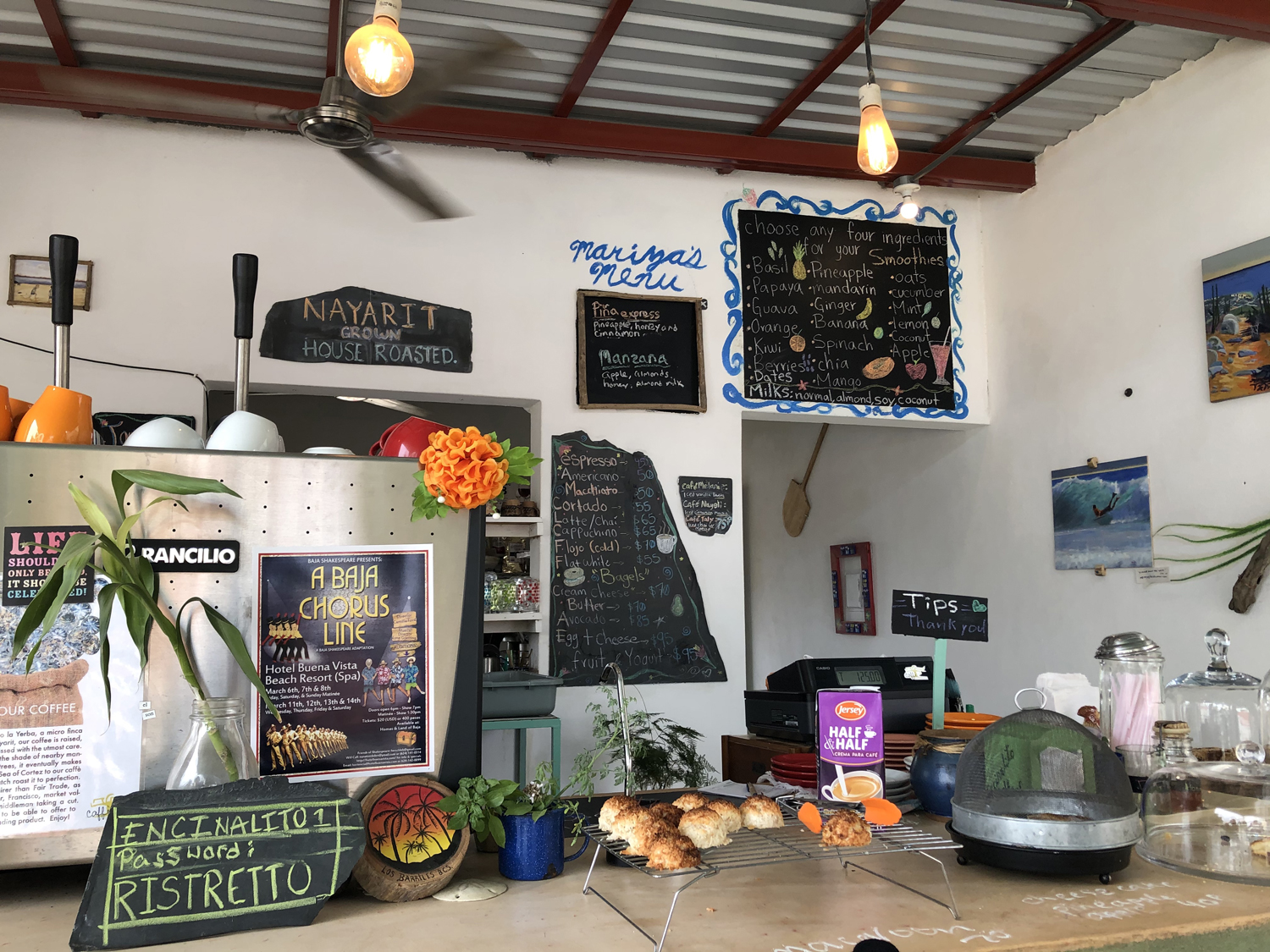
Sitting at the bar at Café Encinalito for post-ride papaya, ginger, and date smoothies.

